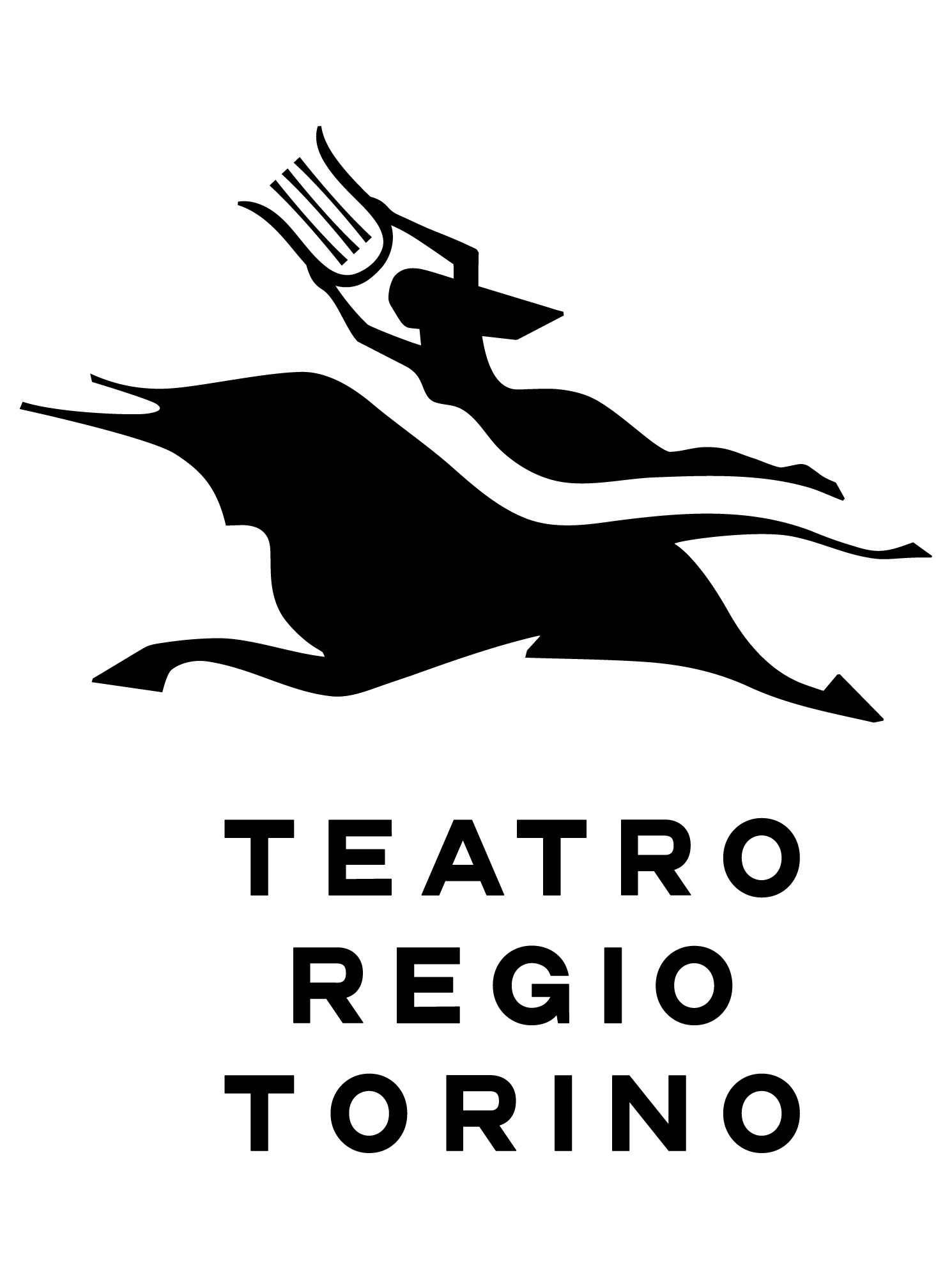Immerse yourself in the Regio! A 360° tour and detailed visit in pictures
A 360° tour
Feel at the Teatro Regio, explore each of these stages in the discovery of the points of view and the characteristics that make it unique!
Entrance foyer
First level foyer
Auditorium
Auditorium seen from the central box and third level foyer
Visit in pictures
A quest to learn about Teatro Regio, a complex and historically stratified building, where the Baroque roots of the old Theatre, built in 1740, and the audacious modern architecture of Carlo Mollino for the building inaugurated in 1973.
Here it is possible to discover all Regio's locations, even the most hidden ones, by way of extensive photographic documentation complete with descriptive texts.
- The ancient exterior
-
The new Teatro Regio is hidden from view for visitors coming from Piazza Castello: this is due to Mollino’s decision, which proved successful, to conserve the façade of the former building, the only part to survive the fire and thus allow for its reutilization.
The façade
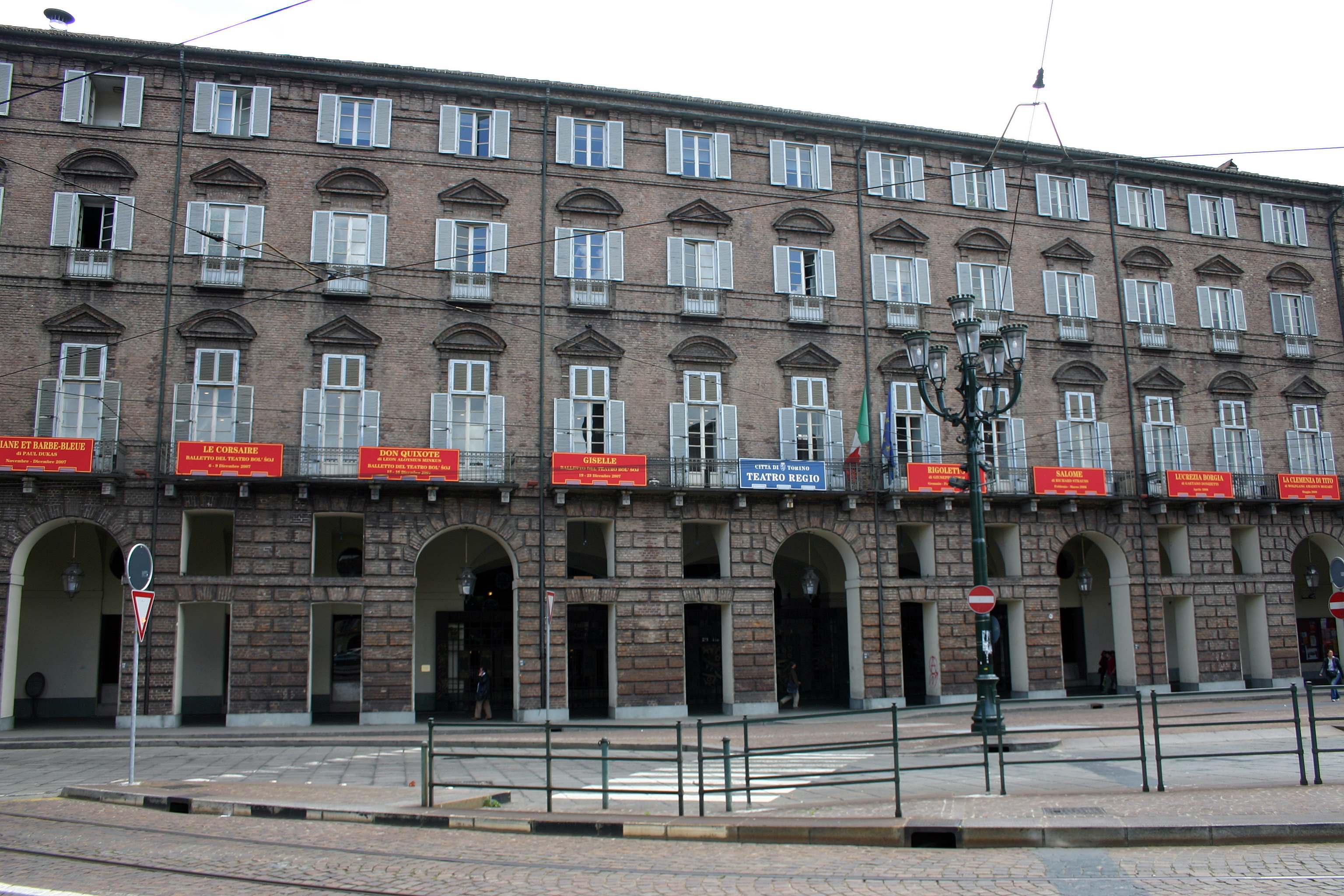
The façade of the Theatre Teatro is the only architectural element remaining from the former building constructed by Count Benedetto Alfieri and destroyed in the fire of 1936: it occupies part of the East side of Piazza Castello and hides the new Regio from view. Carlo Mollino used this façade to create a building for a the administrative offices (the “Palazzina Alfieri”), connected to the new structure by way of the Galleria Tamagno.
Architectural continuity
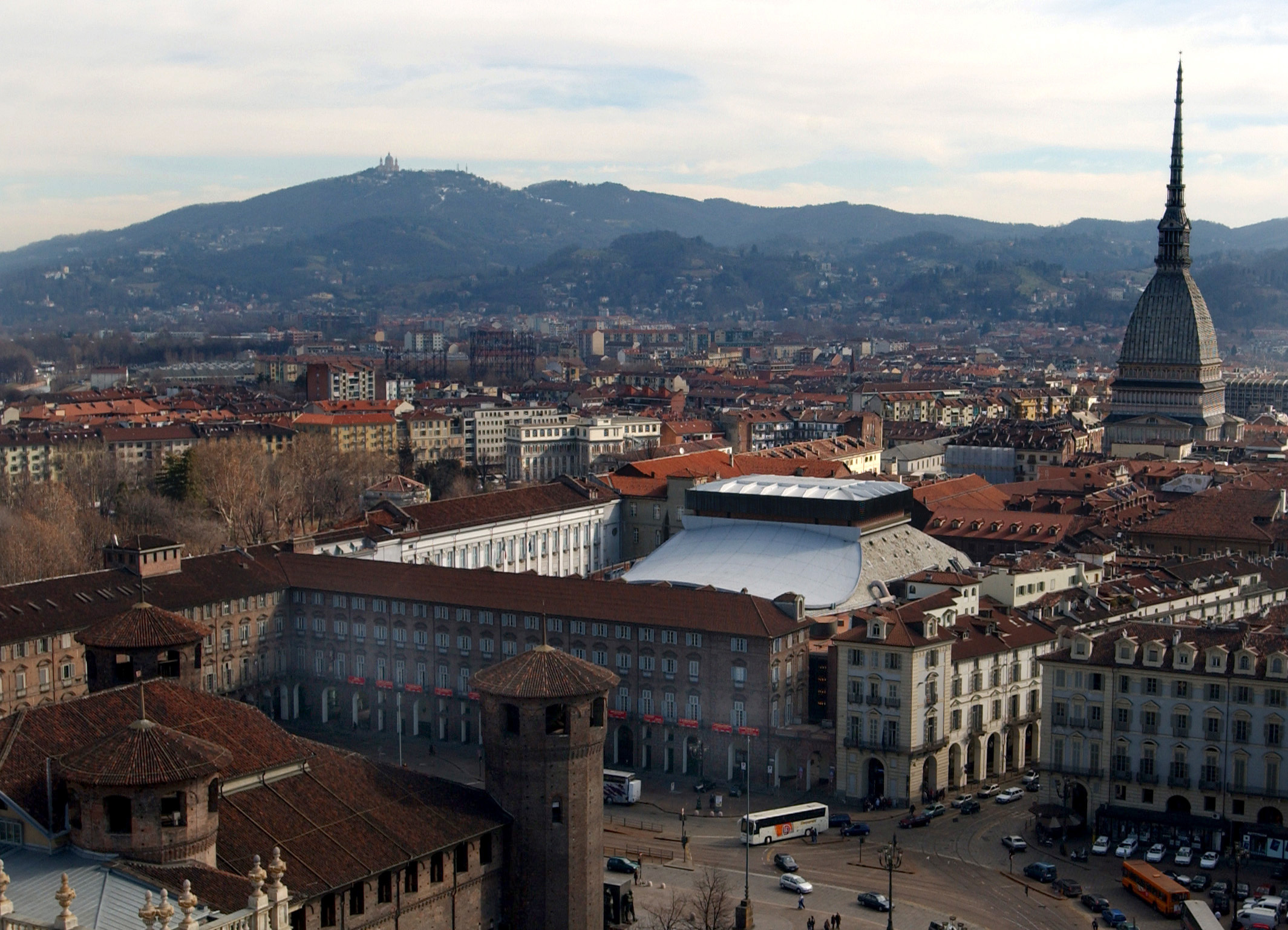
The Regio façade displays perfect architectural continuity with the buildings facing Piazza Castello. The red brick, as in the semicircular and triangular tympana above the windows and porticos, is repeated in the buildings adjacent to the Theatre. This element is also found in the nearby wing of the Antiche Segreterie di Stato, today the seat of the Provincial Council and the Prefecture.
Porticos
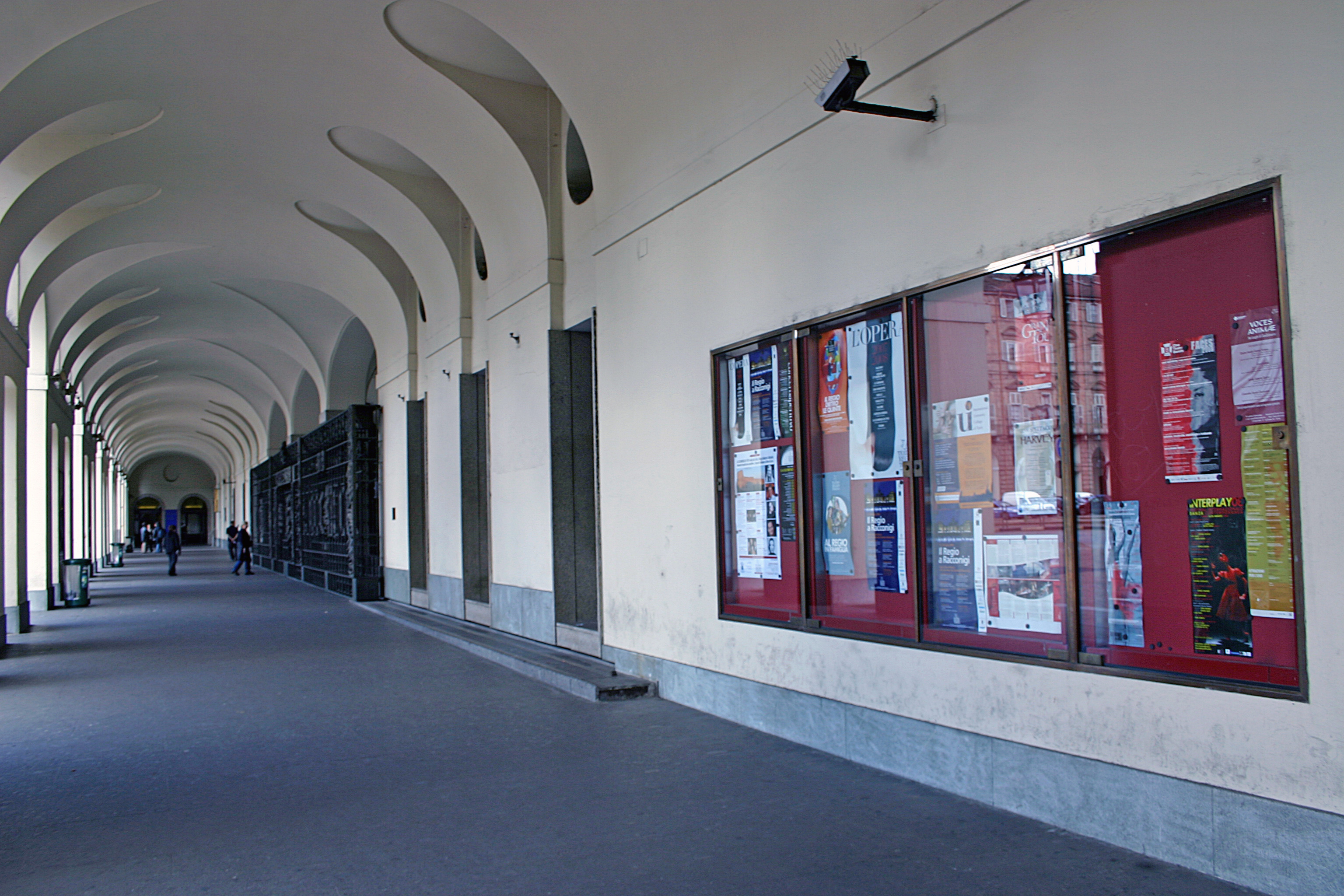
As it was for the former theatre, also today access to the Regio is mediated by a series of porticos that run along the perimeter of the whole square. The porticos are part of the architectural remains of Alfieri’s theatre, and they open onto the square with large arches in the centre of which chandeliers in red glass illuminate the entrance to the theatre every evening. The windows overlooking the square relate the activities of the Theatre from week to week.
Box Office
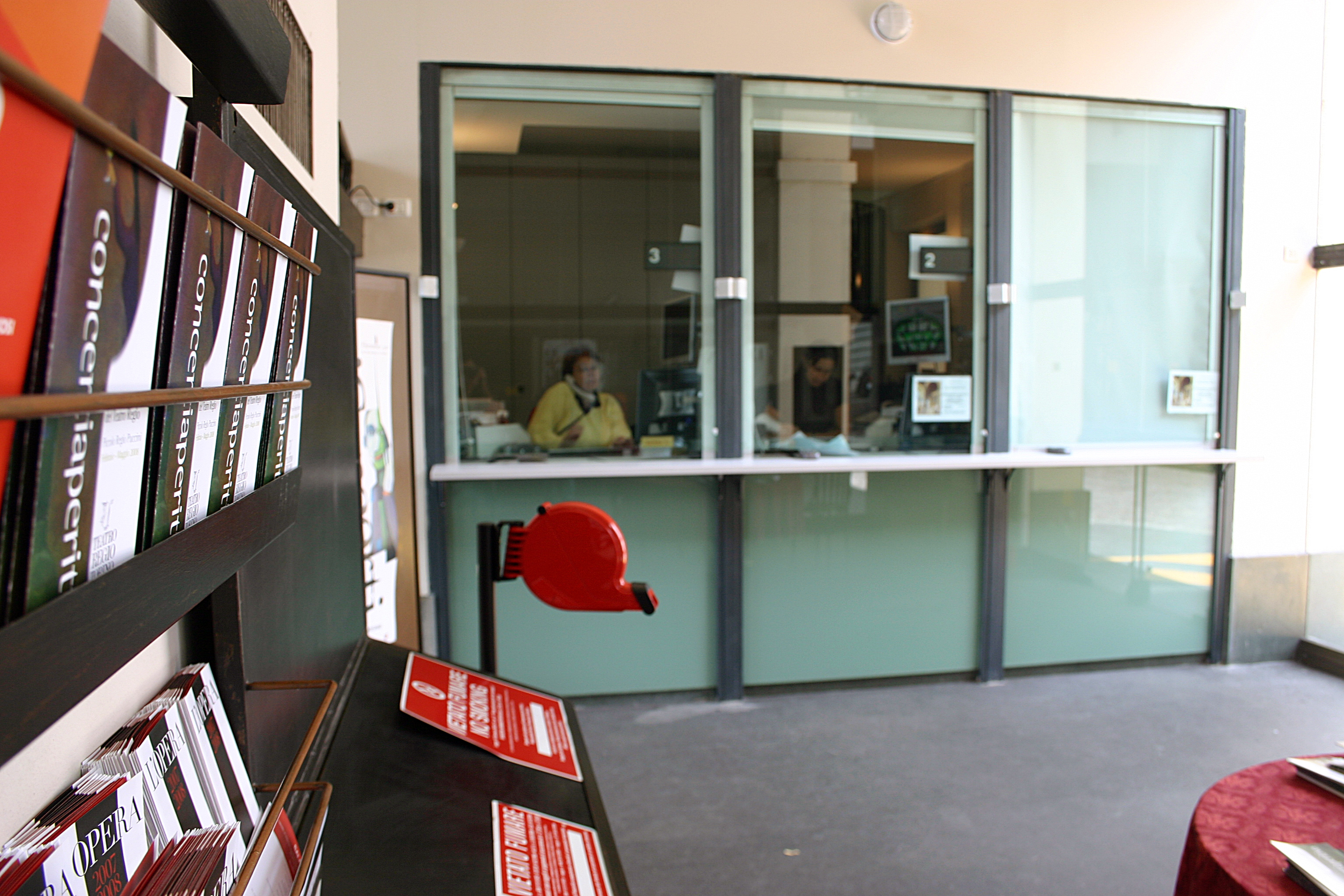
At the end of the porticos, adjacent to the Theatre, is the Box Office of the Regio, equipped with three ticket counters for the public. A completely computerized system assures the safe handling of the sales – also on line – of Season tickets and single tickets plus an easy choice of seating.
- The modern exterior
-
The old eighteenth-century façade onto Piazza Castello hides the completely new building that today houses the actual theatre. The structure, rather than being a parallelepiped, is arranged on a curvilinear plan, tapered symmetrically with respect to the longitudinal axis; in height, there are eight floors, four of which are underground.
The “Musical Odyssey” gate
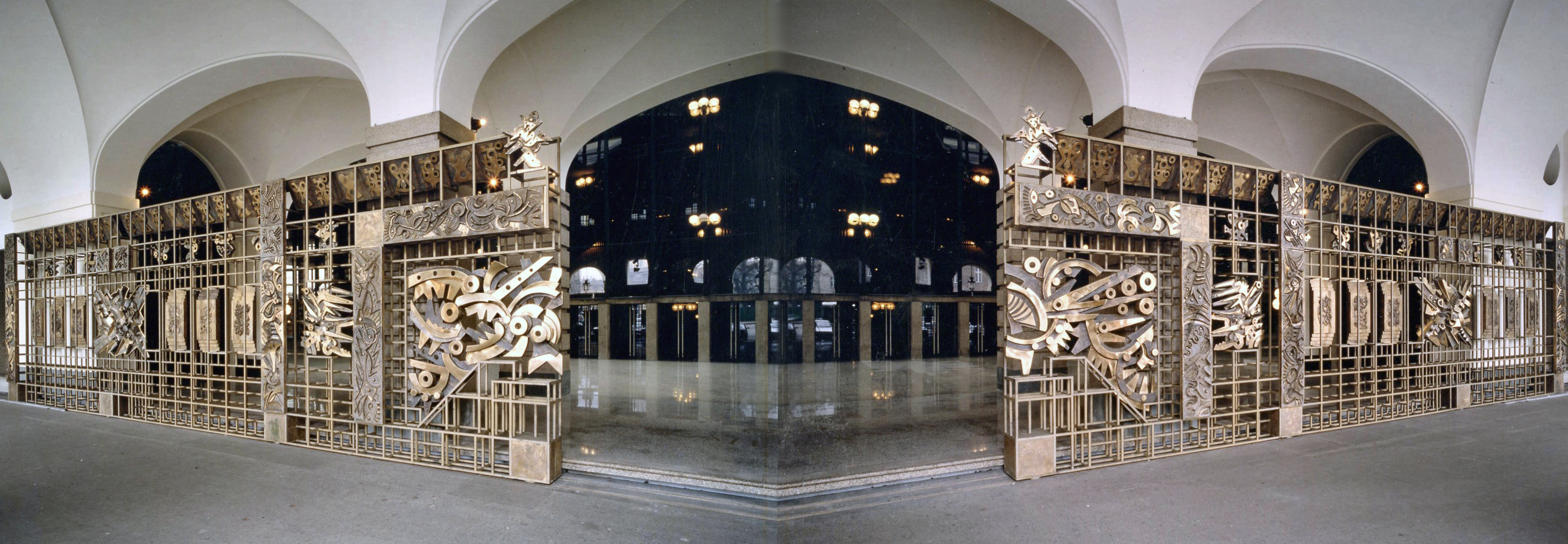
The gate, erected in 1994 to close the Galleria Tamagno, is an abstract work by the sculptor Umberto Mastroianni. It is opened only on the occasion of shows and is composed of two bronze elements placed on sliding rails, divided internally in squares and panels of varying dimensions representing the theme of music.
Galleria Francesco Tamagno
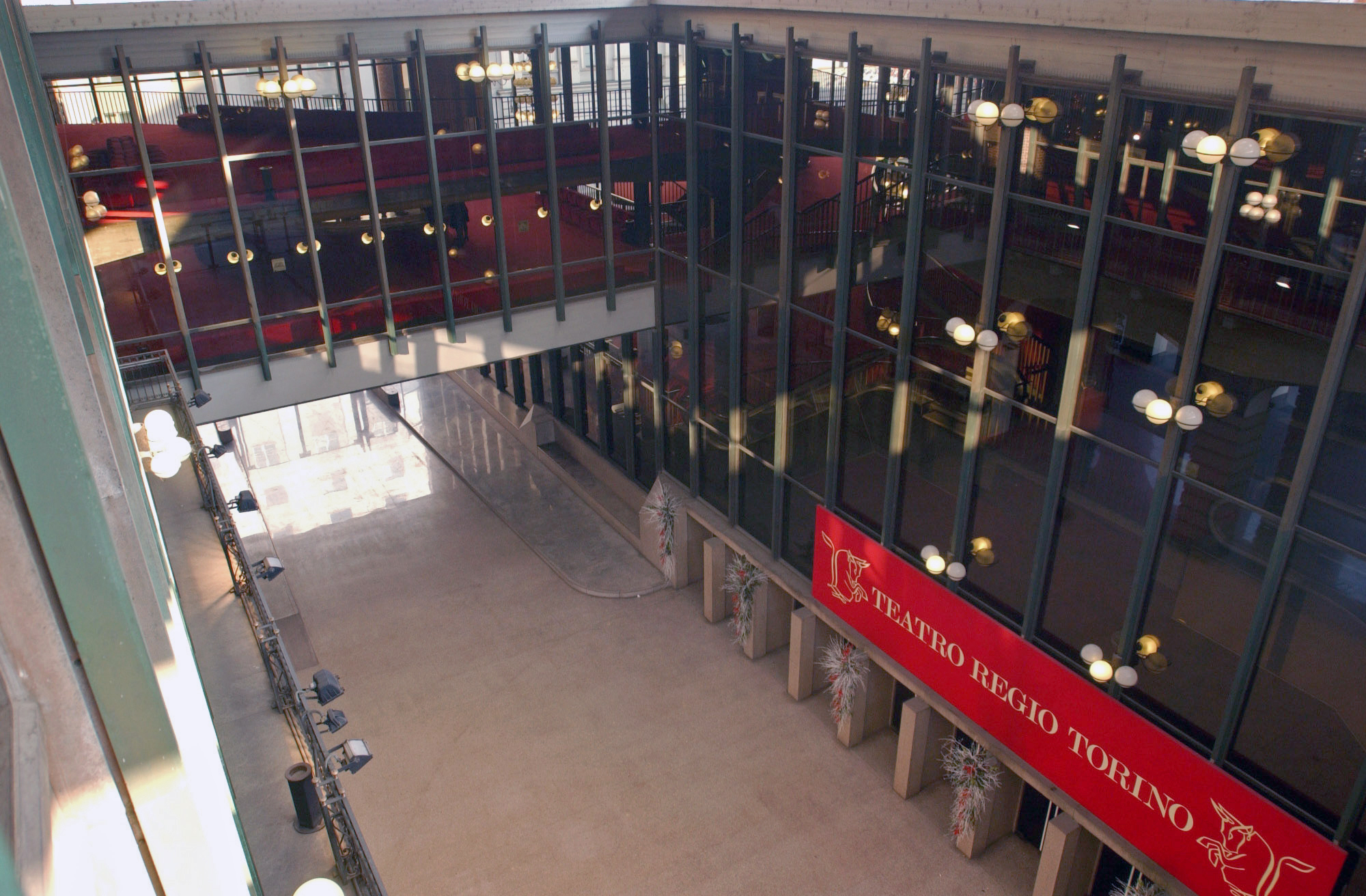
The large atrium – dedicated to the famous tenor from Torino, the first ever to sing the title role of Verdi’s Otello – accommodates the audience while it waits for the entrances to open. Here, you can find, besides the main entrance, access to the Piccolo Regio “Giacomo Puccini” below. Until 1997, when it was dedicated to Francesco Tamagno, the gallery was called “Atrio delle Carrozze” [Carriage Atrium]: in old theatres it was the area allocated to the transit of carriages transporting members of the audience.
Besides accommodating the audiences before or after performances at the Theatre, it can also be utilized for organizing exhibits or hosting travelling shows.Entrances
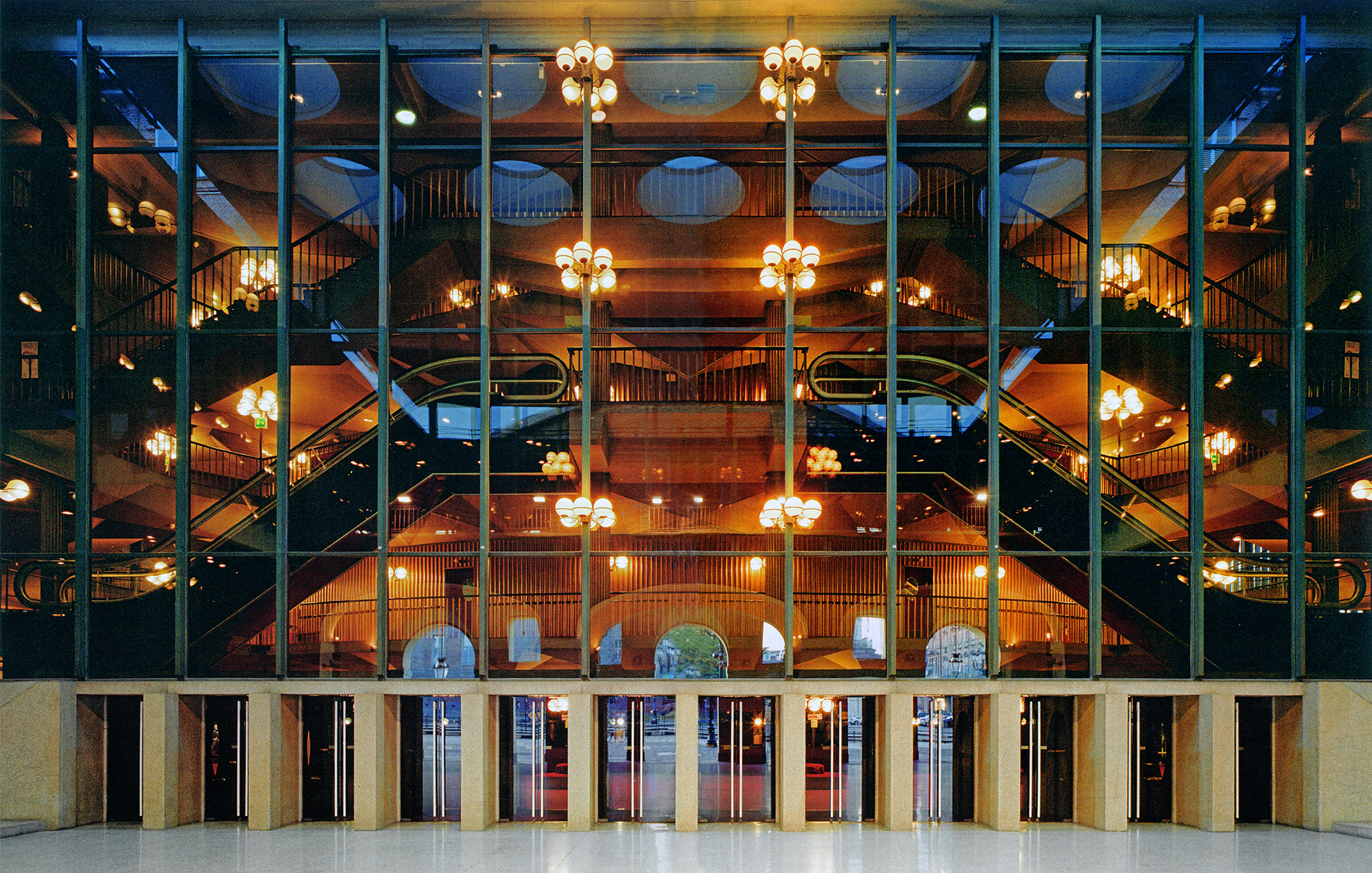 Inside the Galleria Tamagno is located the main entrance that leads to the foyer. However, there are also two side entrances, in via Verdi and the Piazzetta Mollino, one of which is the artists’ entrance. This can be found at the end of the Piazzetta, in proximity to the stage and lifts leading to rehearsal halls and dressing rooms. The side doors are also emergency exits if needed. In via Verdi there is the carriage entrance (or “of the stables”) from which machinery and structures for the stagings are introduced.
Inside the Galleria Tamagno is located the main entrance that leads to the foyer. However, there are also two side entrances, in via Verdi and the Piazzetta Mollino, one of which is the artists’ entrance. This can be found at the end of the Piazzetta, in proximity to the stage and lifts leading to rehearsal halls and dressing rooms. The side doors are also emergency exits if needed. In via Verdi there is the carriage entrance (or “of the stables”) from which machinery and structures for the stagings are introduced.Side walls
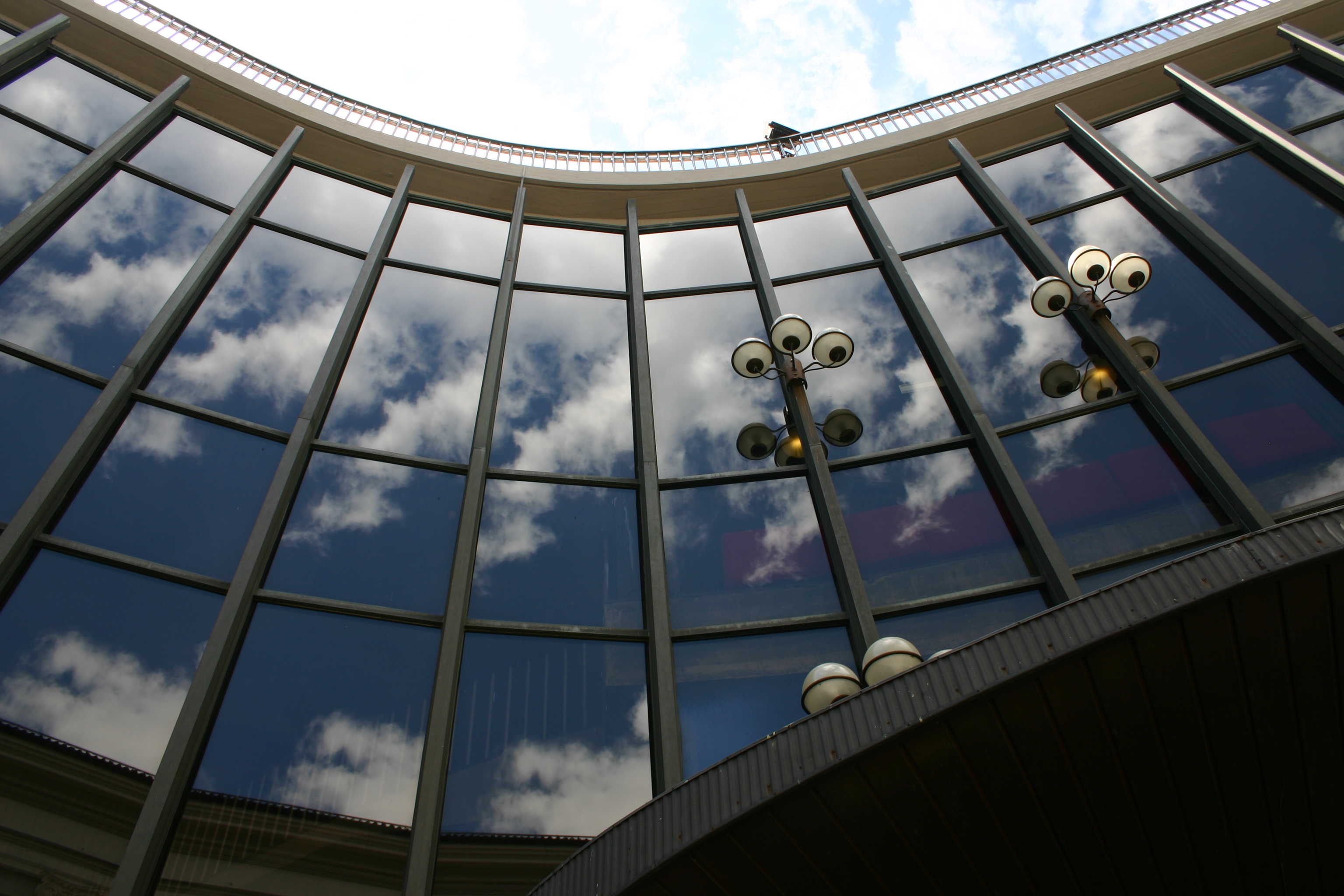
The side walls of the building, of a particular curvilinear form going back to the Baroque period, are lined partly in terra cotta and partly in glass. In elegant contrast, corresponding to the maximum curvature of the walls, are the large windows that converge on the connecting points with the former building. Instead, the rustication of the sections in terra cotta create the form of an eight-pointed star, another reference to Baroque style in Torino and an explicit reproduction of the decoration in the courtyard of Palazzo Carignano, the famous work of Guarino Guarini
Hyperbolic paraboloid
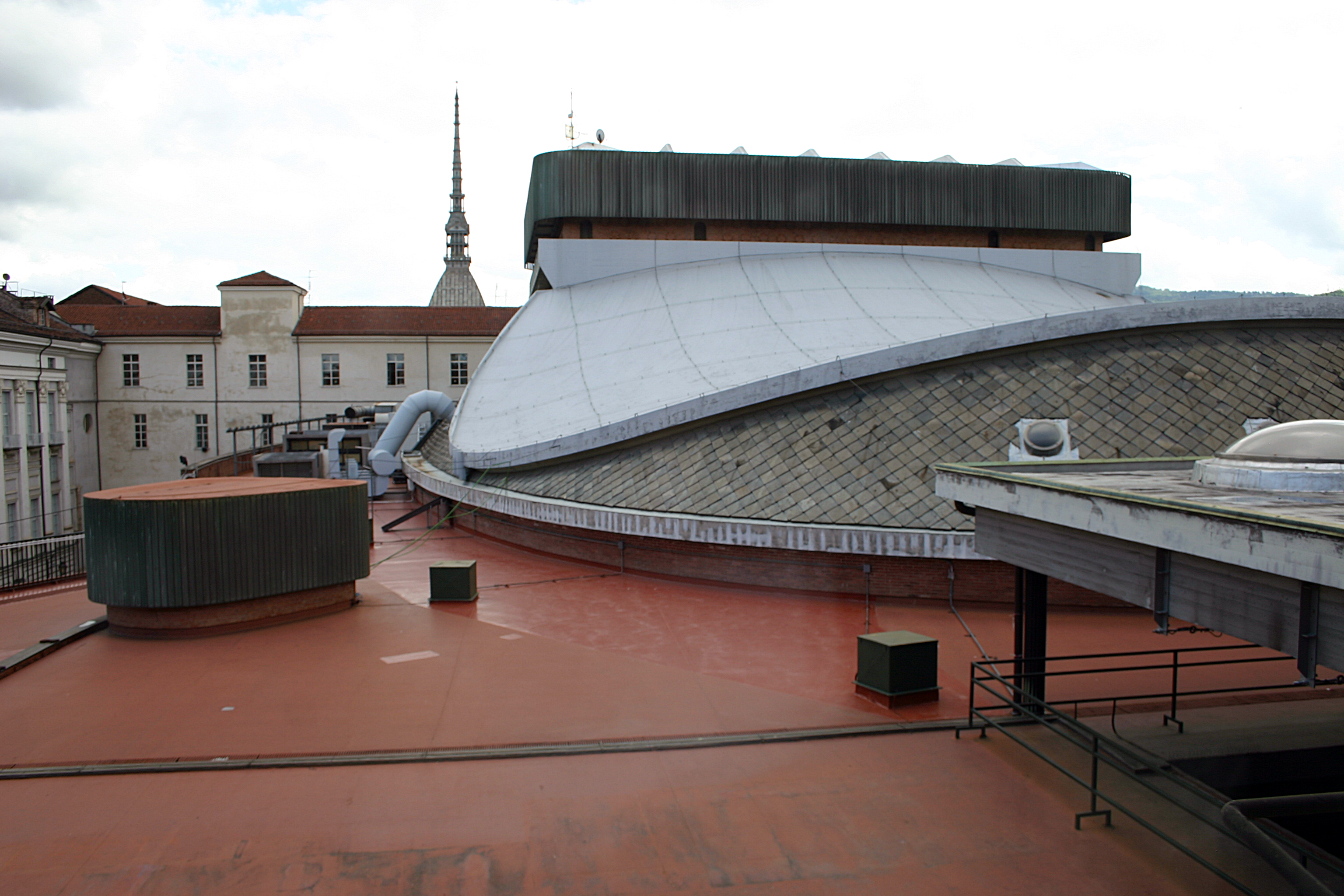
This is the precise name of the structure in concrete that rises above the building communicating with the auditorium, the structure that is normally referred to as “saddle-like”. An external terrace runs along the structure and makes it possible to admire from every angle the elegant sinuosity of its lines. On the north side of the terrace there are air vents, from where the air is aspirated and then conveyed to the purification system, at a depth of -12.50 m.
- Piccolo Regio
-
Almost hidden – but quite visible from its two entrances in the Galleria Francesco Tamagno – the Piccolo Regio, named after Giacomo Puccini on 31 January 1996 on the occasion of the events celebrating the centenary of La Bohème, has been for a long time now the place of experimentation and cultural exchange of the Teatro Regio of Torino. Not infrequently, its stage is also testimony to visiting events such as plays and important jazz concerts. In the same venue are held performances for the schools and conferences to present the titles of the Opera and Ballet Season
Foyer
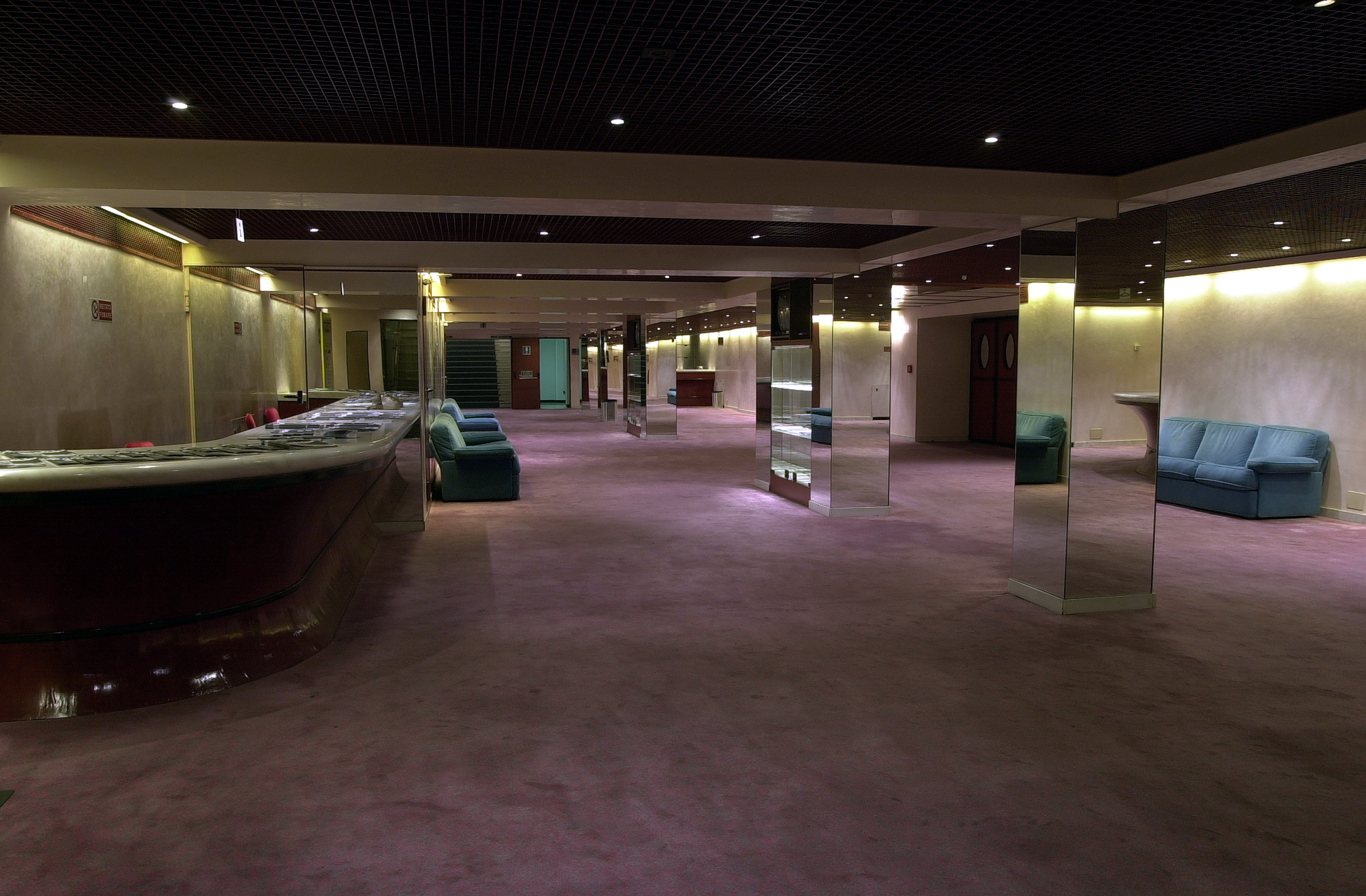 The foyer of the Piccolo Regio can be reached through two glass doors facing the Galleria Francesco Tamagno. The elegant staircases in white marble lead to the padded surroundings below. The foyer, like the auditorium of the Piccolo Regio, was completely restructured in 1988 to adapt to the new fire-protection laws, and the original green carpeting that lined the floors, walls and ceilings was replaced by mirrors and metallic elements. The new carpeting on the floor repeats, with different colours, Mollino’s original design, found in the Regio foyer.
The foyer of the Piccolo Regio can be reached through two glass doors facing the Galleria Francesco Tamagno. The elegant staircases in white marble lead to the padded surroundings below. The foyer, like the auditorium of the Piccolo Regio, was completely restructured in 1988 to adapt to the new fire-protection laws, and the original green carpeting that lined the floors, walls and ceilings was replaced by mirrors and metallic elements. The new carpeting on the floor repeats, with different colours, Mollino’s original design, found in the Regio foyer.Auditorium
 The auditorium is made up of only stalls (seating capacity 380), from which an excellent view of the stage can be enjoyed regardless of the position. Like the foyer, there is pink and green pastel carpeting. On the walls, six panels by Lele Luzzati stand out (produced in 1981 for Il Matrimonio Segreto by Cimarosa), representing in an ironic and naïf way the atmosphere of eighteenth-century theatre boxes.
The auditorium is made up of only stalls (seating capacity 380), from which an excellent view of the stage can be enjoyed regardless of the position. Like the foyer, there is pink and green pastel carpeting. On the walls, six panels by Lele Luzzati stand out (produced in 1981 for Il Matrimonio Segreto by Cimarosa), representing in an ironic and naïf way the atmosphere of eighteenth-century theatre boxes.The stage
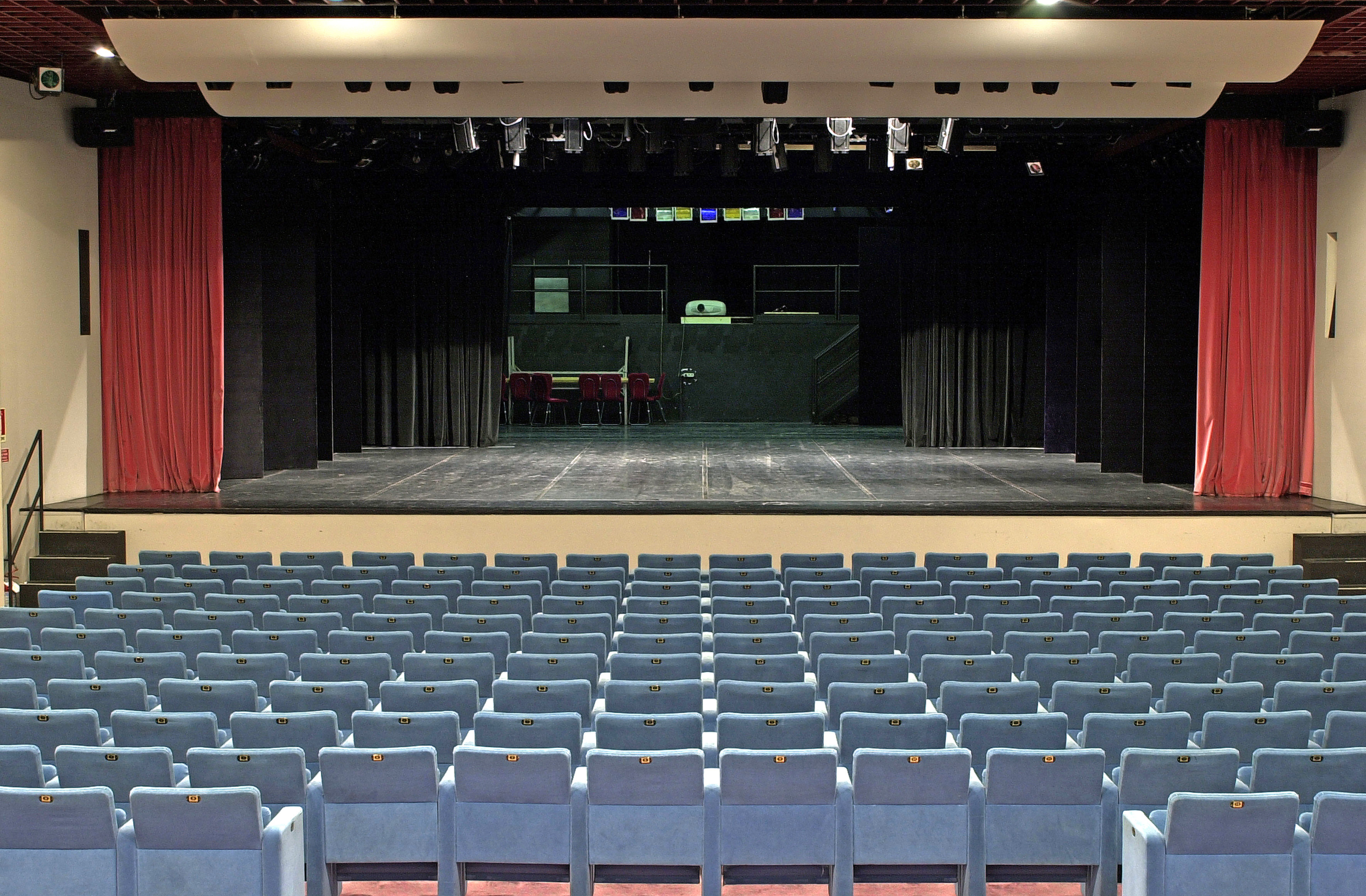 The stage of the Piccolo Regio has a reduced proscenium, but is highly considered, being equipped with suitable facilities for different types of performances. It has five lifts of 9 metres in width by 1 in depth, with a range of movement with respect to the level of the auditorium of 0 to +1 m. The stage has a maximum height of 3,8 metres.
The stage of the Piccolo Regio has a reduced proscenium, but is highly considered, being equipped with suitable facilities for different types of performances. It has five lifts of 9 metres in width by 1 in depth, with a range of movement with respect to the level of the auditorium of 0 to +1 m. The stage has a maximum height of 3,8 metres.The Sala del Pavone
 La Sala del Pavone is a hall adjacent to the auditorium of the Piccolo Regio, used mainly for conferences and didactic activities. Before the restoration in 1988, the space was used as a bar (today at the end of the foyer). Restoration work included equipping the hall with tables with foldaway monitors and microphones, a roll-up screen for projections as well as a video-projection system connected to the main auditorium.
La Sala del Pavone is a hall adjacent to the auditorium of the Piccolo Regio, used mainly for conferences and didactic activities. Before the restoration in 1988, the space was used as a bar (today at the end of the foyer). Restoration work included equipping the hall with tables with foldaway monitors and microphones, a roll-up screen for projections as well as a video-projection system connected to the main auditorium. - Foyer
-
The foyer of a theatre is the area outside the auditorium where audiences can congregate before performances, during intermissions and after performances. Inside the Teatro Regio di Torino, this zone is an open space without divisions by floor, distributed on three levels. In his design, Carlo Mollino resolved the problem of the relationship with the previous architecture of Alfieri and Castellamonte by keeping the buildings adjacent to the Theatre in view. The Foyer is composed of different areas and is characterised by visible architectural elements and by the predominance of the colour red. It extends over 4,000 sq m, allowing the public to move comfortably in the available space.
Main entrance
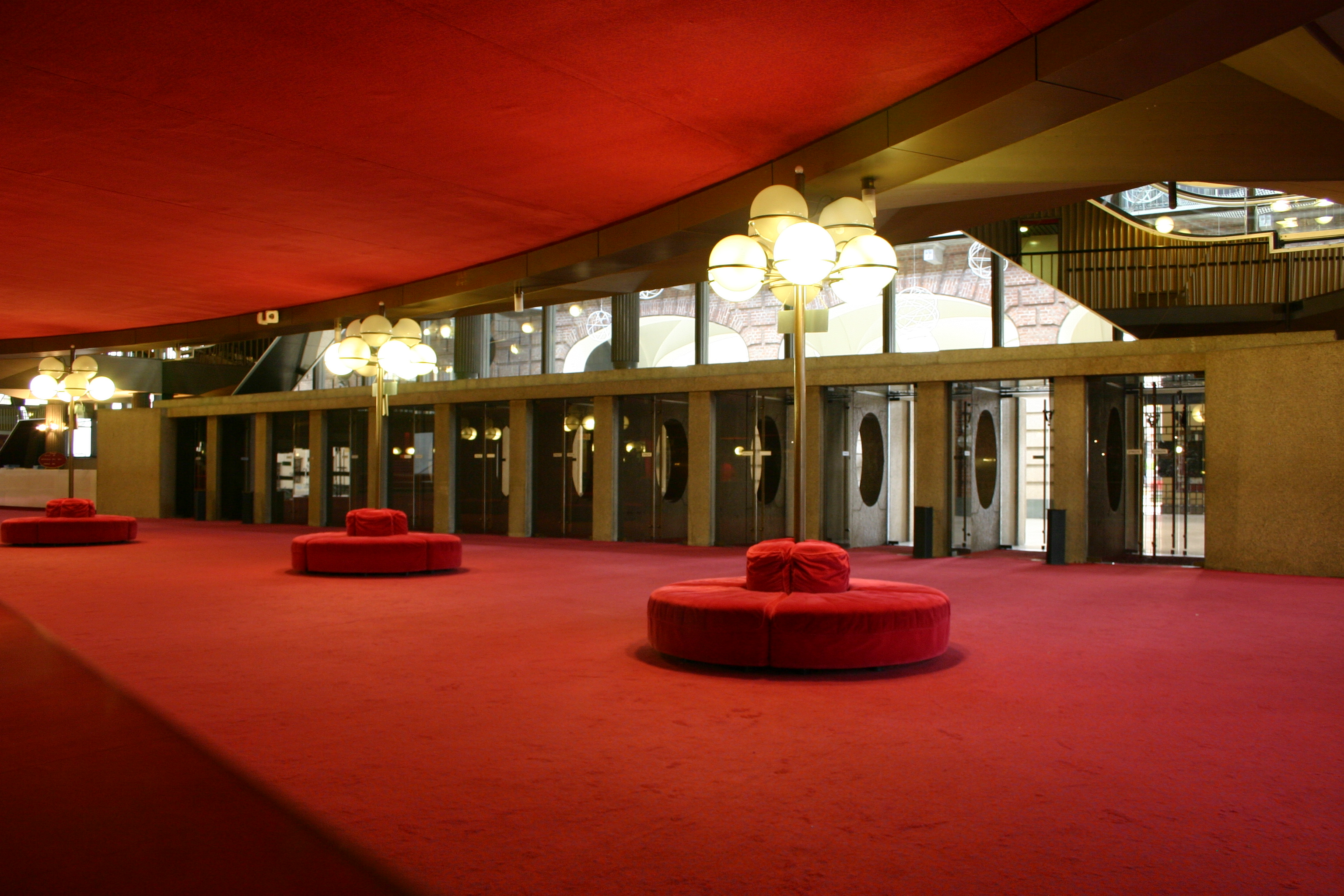 The main entrance consists of a series of twelve double doors in burnished crystal, separated by granite partitions but connected visually by a sequence of elliptic openings. The solution, defined as comb-like, allows for an orderly distribution of the public as it enters the building.
The main entrance consists of a series of twelve double doors in burnished crystal, separated by granite partitions but connected visually by a sequence of elliptic openings. The solution, defined as comb-like, allows for an orderly distribution of the public as it enters the building.
A precise architectural choice identified Sardinian granite as having the best coloration to be placed alongside the green Roya stone.Cloakroom
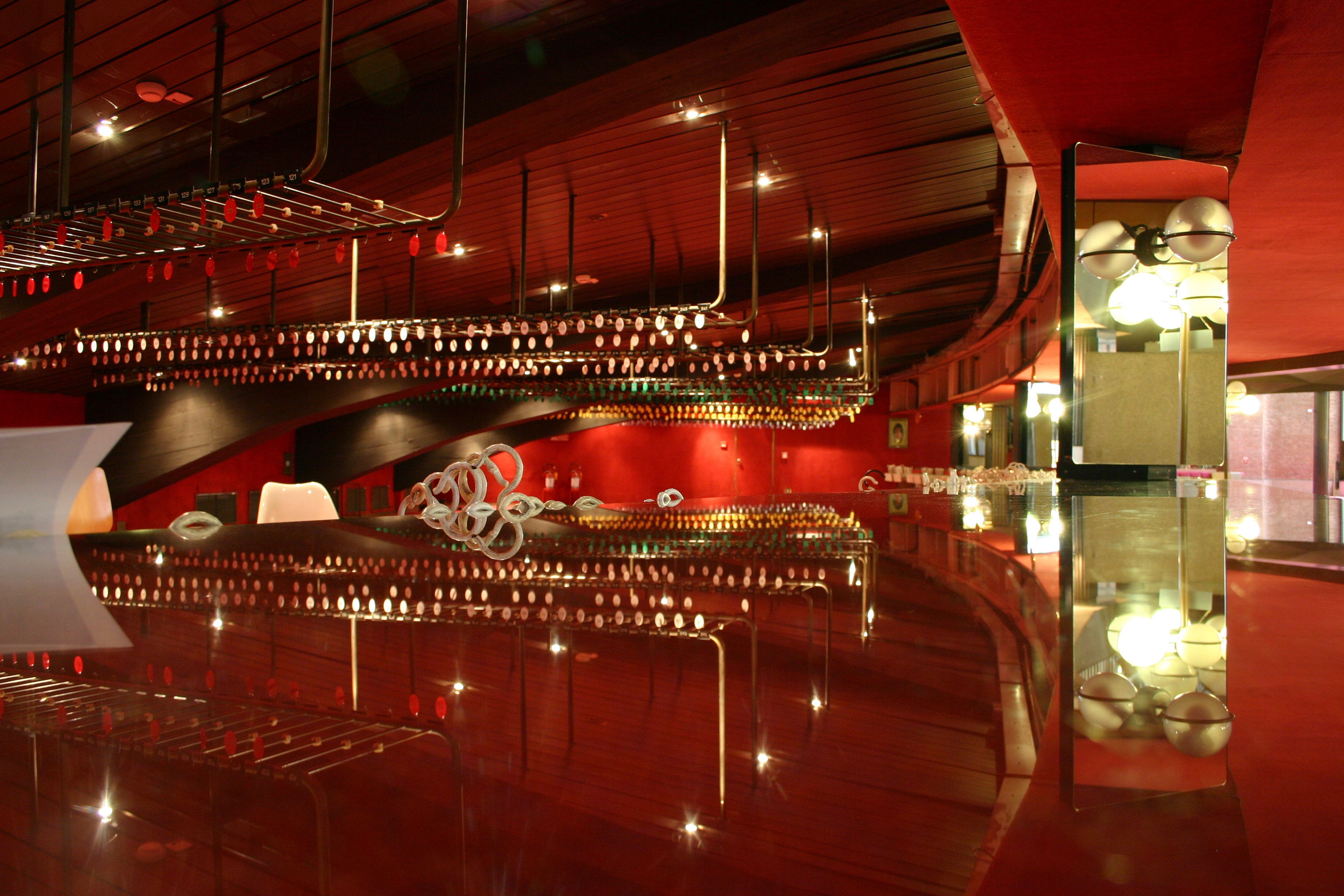 Facing the main entrance, the cloakroom is constituted by a fan-shaped counter that is 30 metres in length so as to allow the public to spread out and to facilitate rapid service. At the sides of the cloakroom are two elliptic-shaped rooms where a closed-circuit television permits the viewing of the performance for the benefit of any latecomers.
Facing the main entrance, the cloakroom is constituted by a fan-shaped counter that is 30 metres in length so as to allow the public to spread out and to facilitate rapid service. At the sides of the cloakroom are two elliptic-shaped rooms where a closed-circuit television permits the viewing of the performance for the benefit of any latecomers.Chandeliers
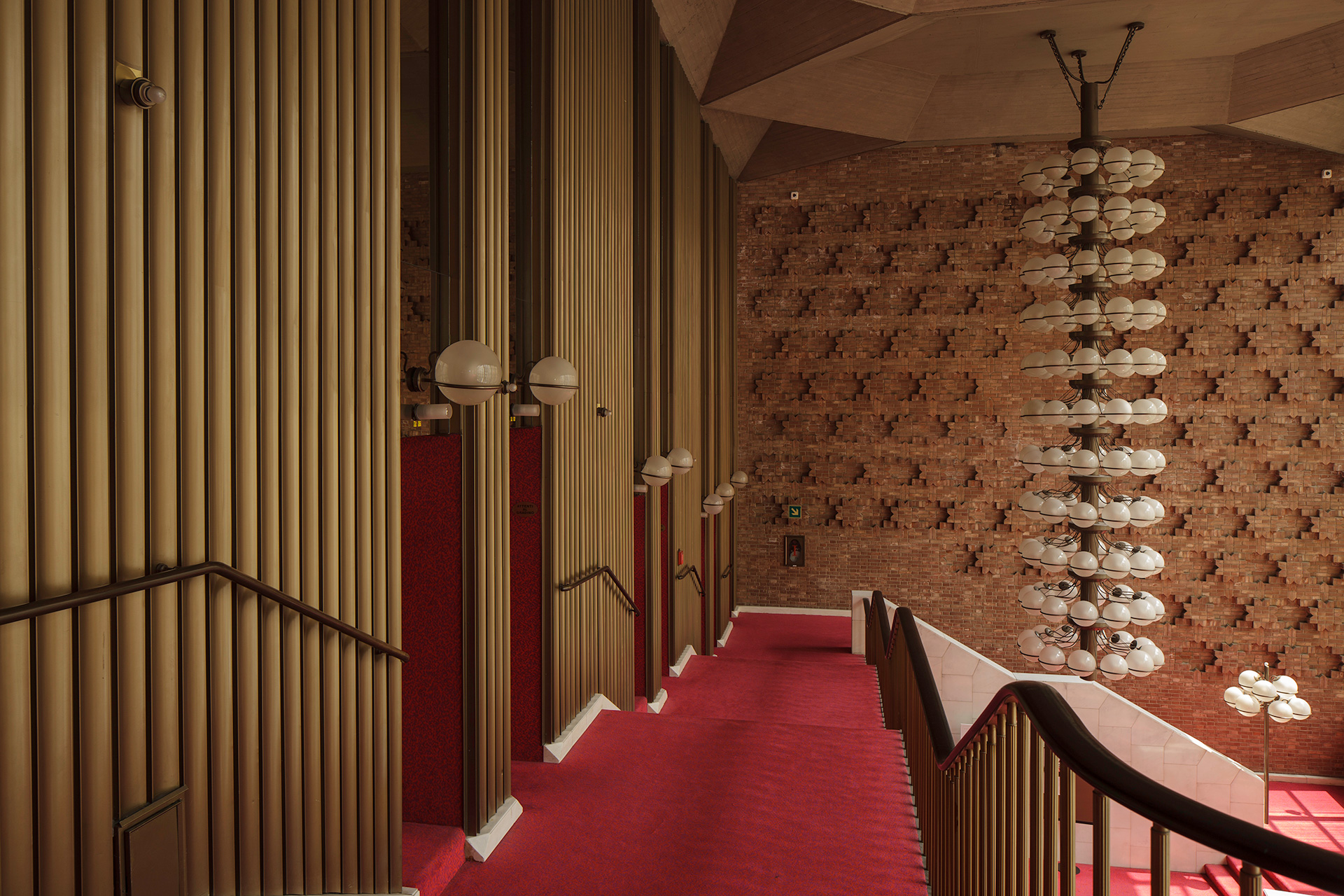 The chandeliers in the foyer, with their pattern repeated outside the Theatre, were designed, like all the architectural and decorative details, by Mollino himself. They are made up of illuminated globes arranged in clusters of various dimensions, similar in style to the illumination of nineteenth-century opera houses. The globes, distributed around the foyer, thus create lighting composizions of different shapes which are also found in pairs in the auditorium, near each box.
The chandeliers in the foyer, with their pattern repeated outside the Theatre, were designed, like all the architectural and decorative details, by Mollino himself. They are made up of illuminated globes arranged in clusters of various dimensions, similar in style to the illumination of nineteenth-century opera houses. The globes, distributed around the foyer, thus create lighting composizions of different shapes which are also found in pairs in the auditorium, near each box.Staircases
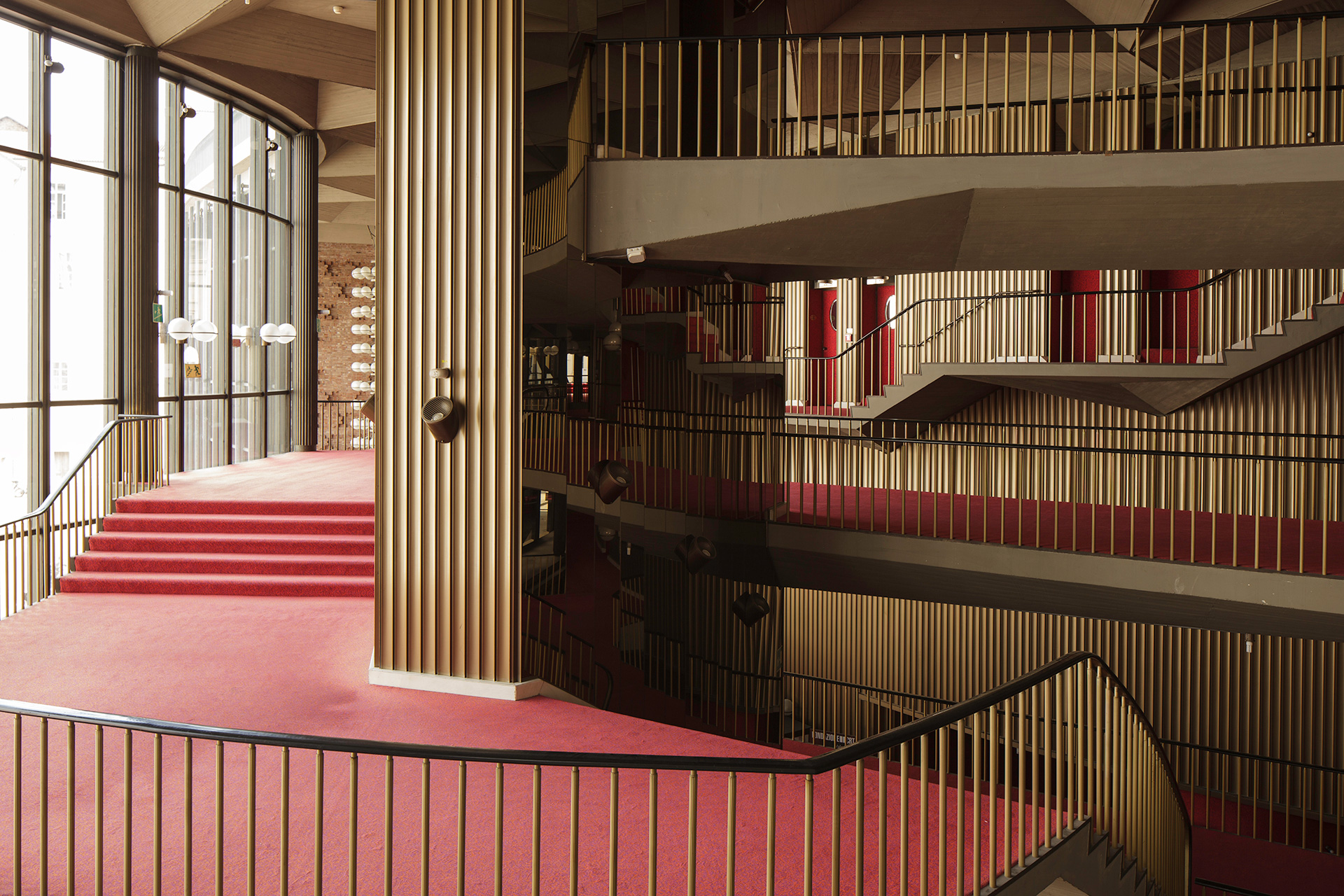 Two staircases intertwine in a spiral around a central body enclosing the lifts; another two staircases branch out at the ends of the foyer along the perimeter of the auditorium and lead to the entrances to the boxes, the two higher entrances to the auditorium and the floor where the bars are located.
Two staircases intertwine in a spiral around a central body enclosing the lifts; another two staircases branch out at the ends of the foyer along the perimeter of the auditorium and lead to the entrances to the boxes, the two higher entrances to the auditorium and the floor where the bars are located.
The four staircases rest on exposed concrete structures jutting from the perimetrical cylindroid of the auditorium, and mirror the structure of the boxes. To these two pairs of staircases are added the two symmetrical escalators overlooking the Galleria Tamagno.Passageways and bars
 At a height of 7 metres, two passageway with walls of crystal connect both physically and symbolically the modern building with the old one. On the passageways there are two bars with elliptic-shaped marble counters. This is the best view point to enjoy at the same time the architecture of the State Archive designed by Castellamonte and the inside of the wing of Palazzo Alfieri.
At a height of 7 metres, two passageway with walls of crystal connect both physically and symbolically the modern building with the old one. On the passageways there are two bars with elliptic-shaped marble counters. This is the best view point to enjoy at the same time the architecture of the State Archive designed by Castellamonte and the inside of the wing of Palazzo Alfieri.Foyer del Toro
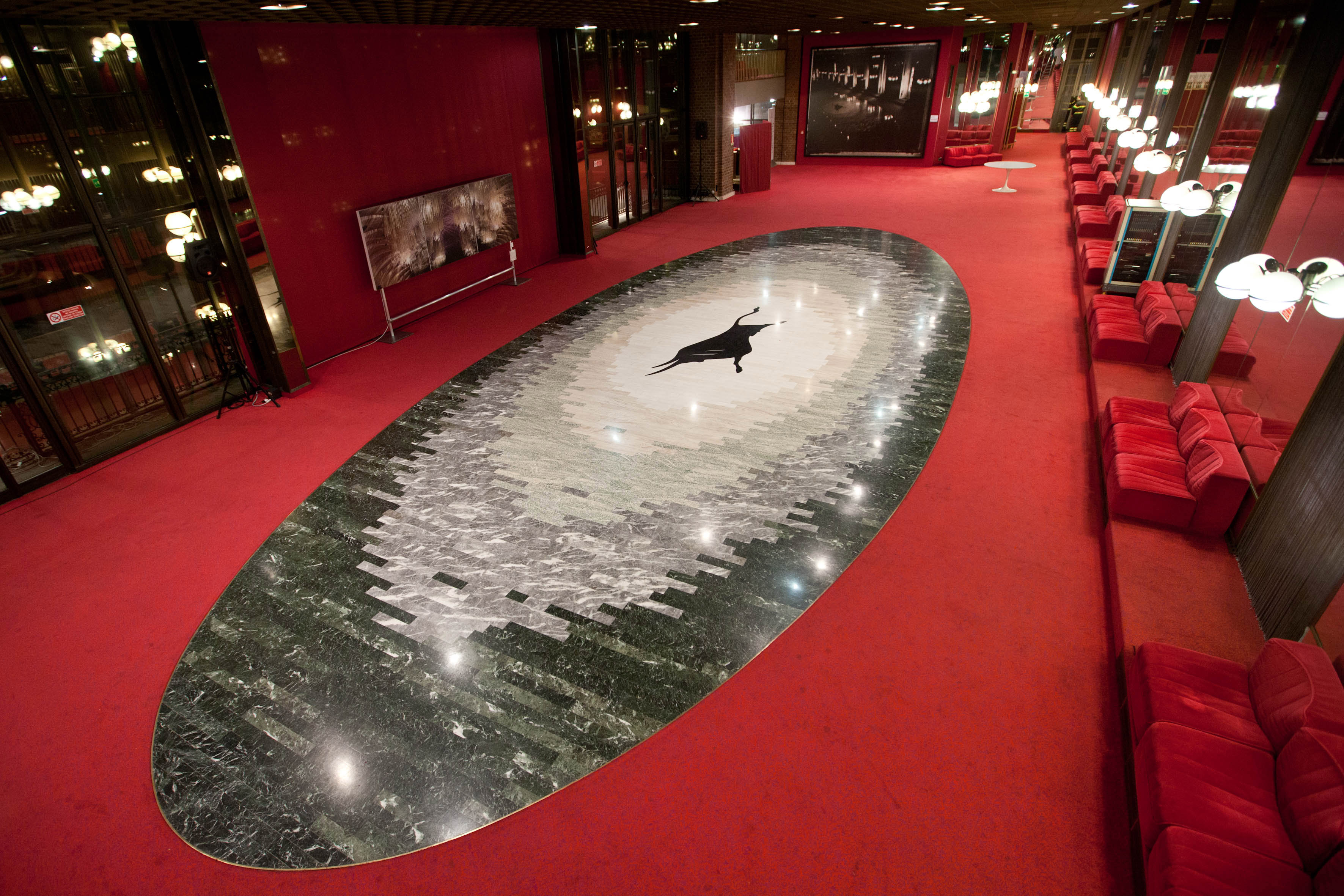 The Foyer del Toro is a large hall – created inside the Palazzina Alfieri – that owes its name to the large marble mosaic representing a stylised rampant bull, the symbol of the city. This hall, the total area of which is 750 sq m, looks out on both Piazza Castello and the new building through a play of windows and mirrors, made even more seductive by the elegant illumination of globes. The false ceiling is created by a metallic grid containing a series of illuminating bodies.
The Foyer del Toro is a large hall – created inside the Palazzina Alfieri – that owes its name to the large marble mosaic representing a stylised rampant bull, the symbol of the city. This hall, the total area of which is 750 sq m, looks out on both Piazza Castello and the new building through a play of windows and mirrors, made even more seductive by the elegant illumination of globes. The false ceiling is created by a metallic grid containing a series of illuminating bodies.Sala Caminetto
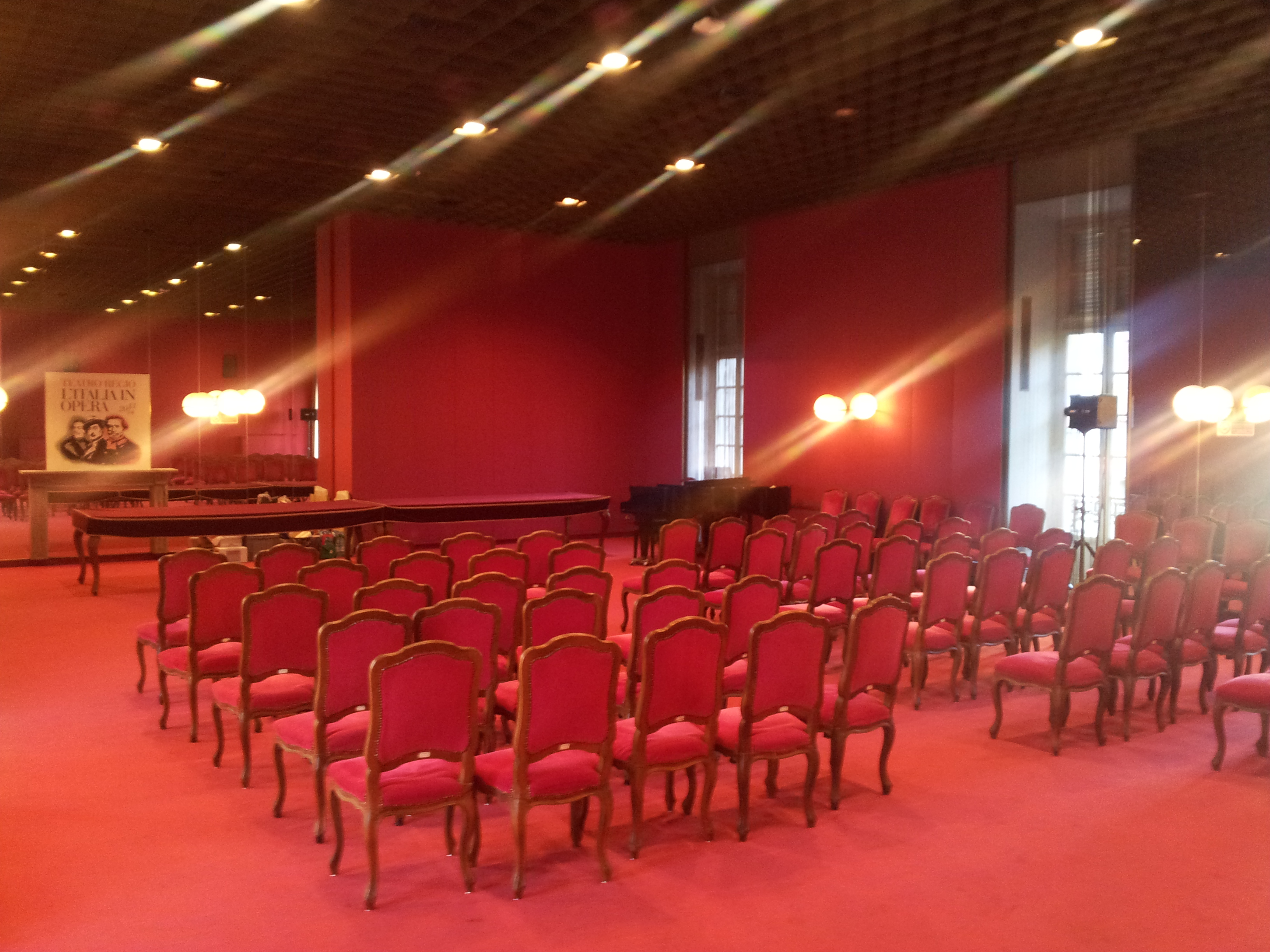 The Sala Caminetto, entitled to Maria Callas, is located close to the Foyer del Toro and is the junction of the old branch of Palazzo Reale with the State Archive. It was formerly called the Sala del Caminetto to signal the presence of an old marble hearth, a rare relic of the former Theatre, where was situated in the the royal box, saved from the fire of 1936. The hall, which can hold up to 150 people, hosts conferences and didactic activities.
The Sala Caminetto, entitled to Maria Callas, is located close to the Foyer del Toro and is the junction of the old branch of Palazzo Reale with the State Archive. It was formerly called the Sala del Caminetto to signal the presence of an old marble hearth, a rare relic of the former Theatre, where was situated in the the royal box, saved from the fire of 1936. The hall, which can hold up to 150 people, hosts conferences and didactic activities.Ceiling and windows
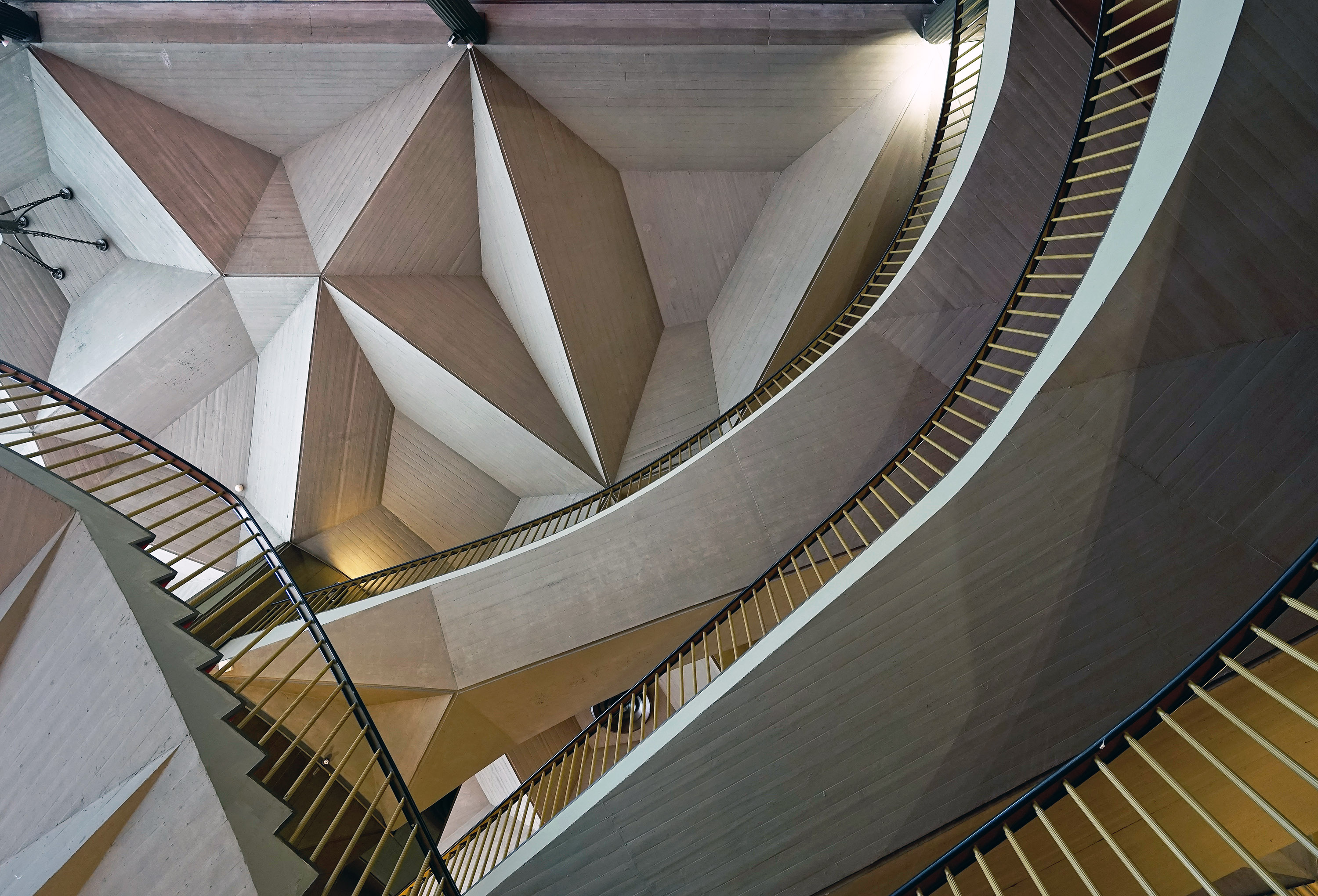 The ceiling of the Foyer appears as a succession of geometric shapes in exposed concrete, bent and creased in conformity with polyhedral shapes that give load-bearing capacity and rigidity to the structure.
The ceiling of the Foyer appears as a succession of geometric shapes in exposed concrete, bent and creased in conformity with polyhedral shapes that give load-bearing capacity and rigidity to the structure.
The large windows in crystal allow for maximum use of the natural light and a reciprocal exchange of internal-external perspective, enabling one to view the architecture facing the Theatre, in particular the State Archive, designed by Filippo Juvarra, on the side of the Piazzetta Mollino. The movement lent to those surfaces frees the rigid layout of a narrow passage that would have been created with the parallel walls of the adjacent buildings. - Auditorium
-
The auditorium has the shape of a partially opened shell, its lines visibly converging on the stage. The descending stalls and the single tier of boxes allow a total capacity of 1592 seats.
Stalls
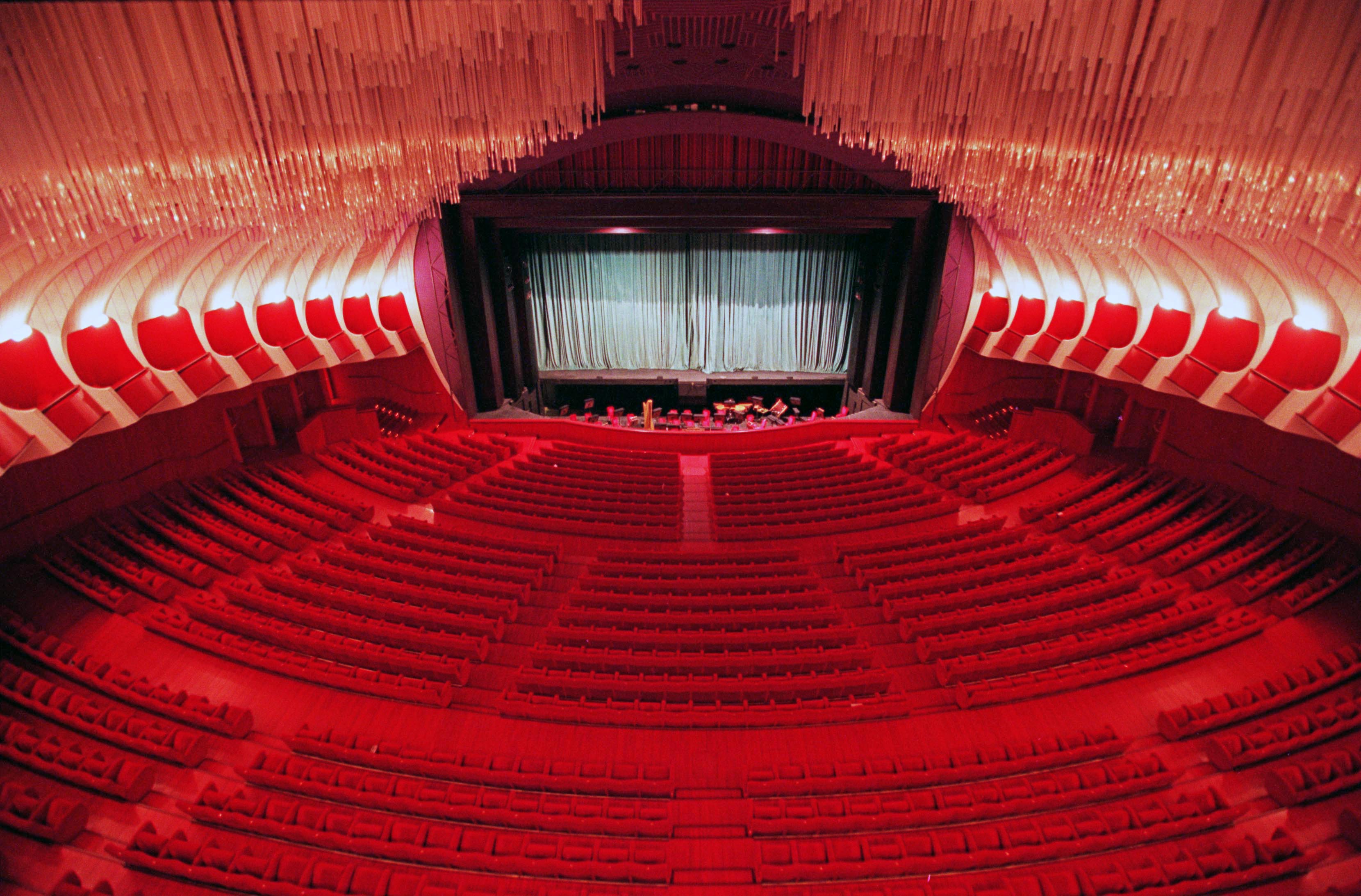 The stalls, restored in 1996 to improve the acoustics, are composed of 29 descending rows and have a capacity of 1398 seats. The seats in the stalls, also involved in the restoration, are almost completely covered in red velvet, with the exception of the backs, which, like the walls and floor of the auditorium, are in beech wood.
The stalls, restored in 1996 to improve the acoustics, are composed of 29 descending rows and have a capacity of 1398 seats. The seats in the stalls, also involved in the restoration, are almost completely covered in red velvet, with the exception of the backs, which, like the walls and floor of the auditorium, are in beech wood.Chandelier
 The chandelier looks like an enchanting golden cascade laid out in a seemingly random way on a vast area of the vault. Composed of 1,762 stems equipped with light spots and 1,900 reflective stems in Perspex of various lengths, it has a total power of 70.5 KW, while each single light bulb is 40 W.
The chandelier looks like an enchanting golden cascade laid out in a seemingly random way on a vast area of the vault. Composed of 1,762 stems equipped with light spots and 1,900 reflective stems in Perspex of various lengths, it has a total power of 70.5 KW, while each single light bulb is 40 W.Ceiling
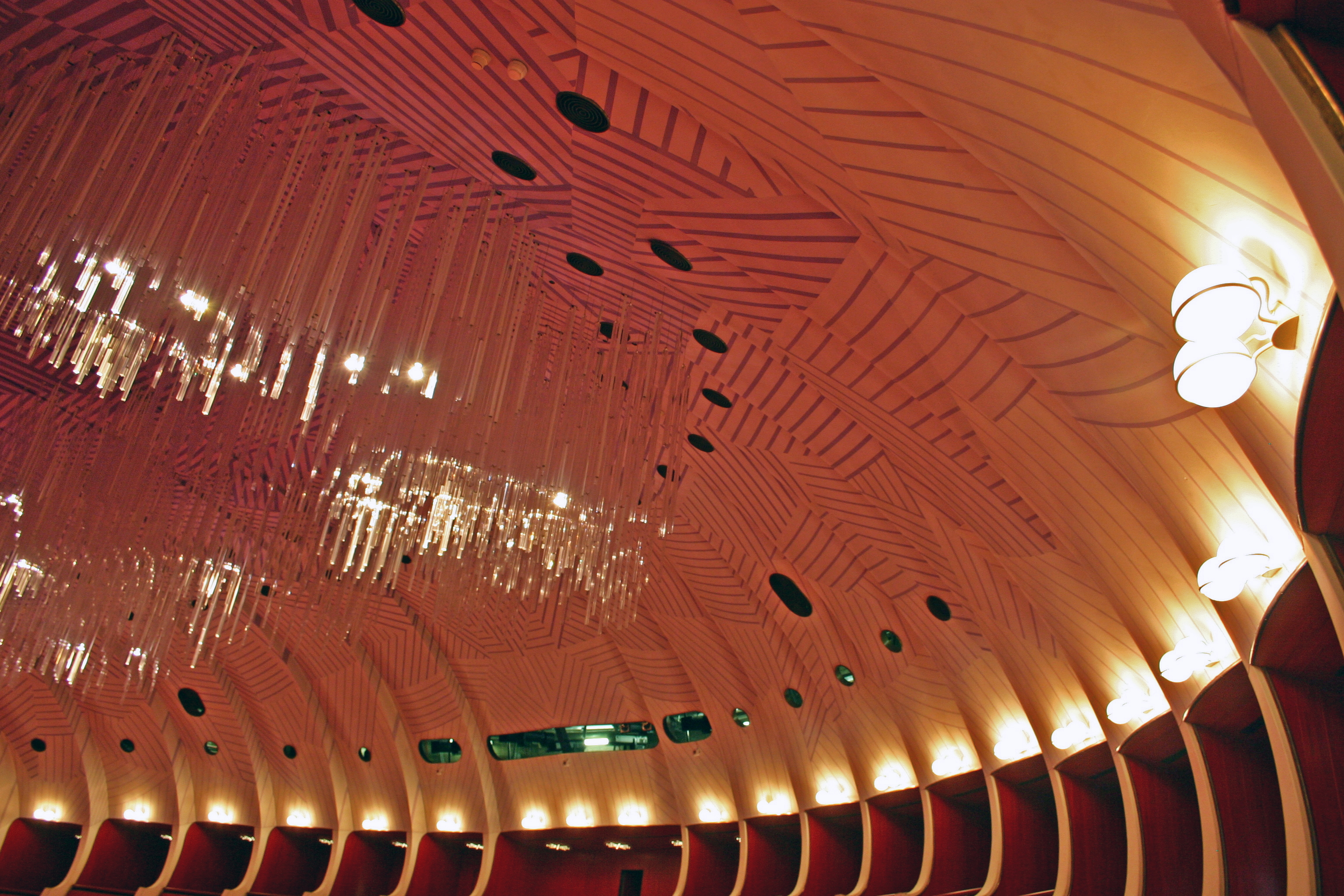 The auditorium is covered by a wooden dome in the shape of a shell. It has an original chromatic gradation that goes from ivory streaked with pale indigo to dark indigo. The ceiling, being the principal element responsible for the acoustics of the auditorium, was studied in every minimum structural detail by engineers specialised in acoustical physics. It is supported by a system of metal cables connected to the external structure in concrete.
The auditorium is covered by a wooden dome in the shape of a shell. It has an original chromatic gradation that goes from ivory streaked with pale indigo to dark indigo. The ceiling, being the principal element responsible for the acoustics of the auditorium, was studied in every minimum structural detail by engineers specialised in acoustical physics. It is supported by a system of metal cables connected to the external structure in concrete.Boxes
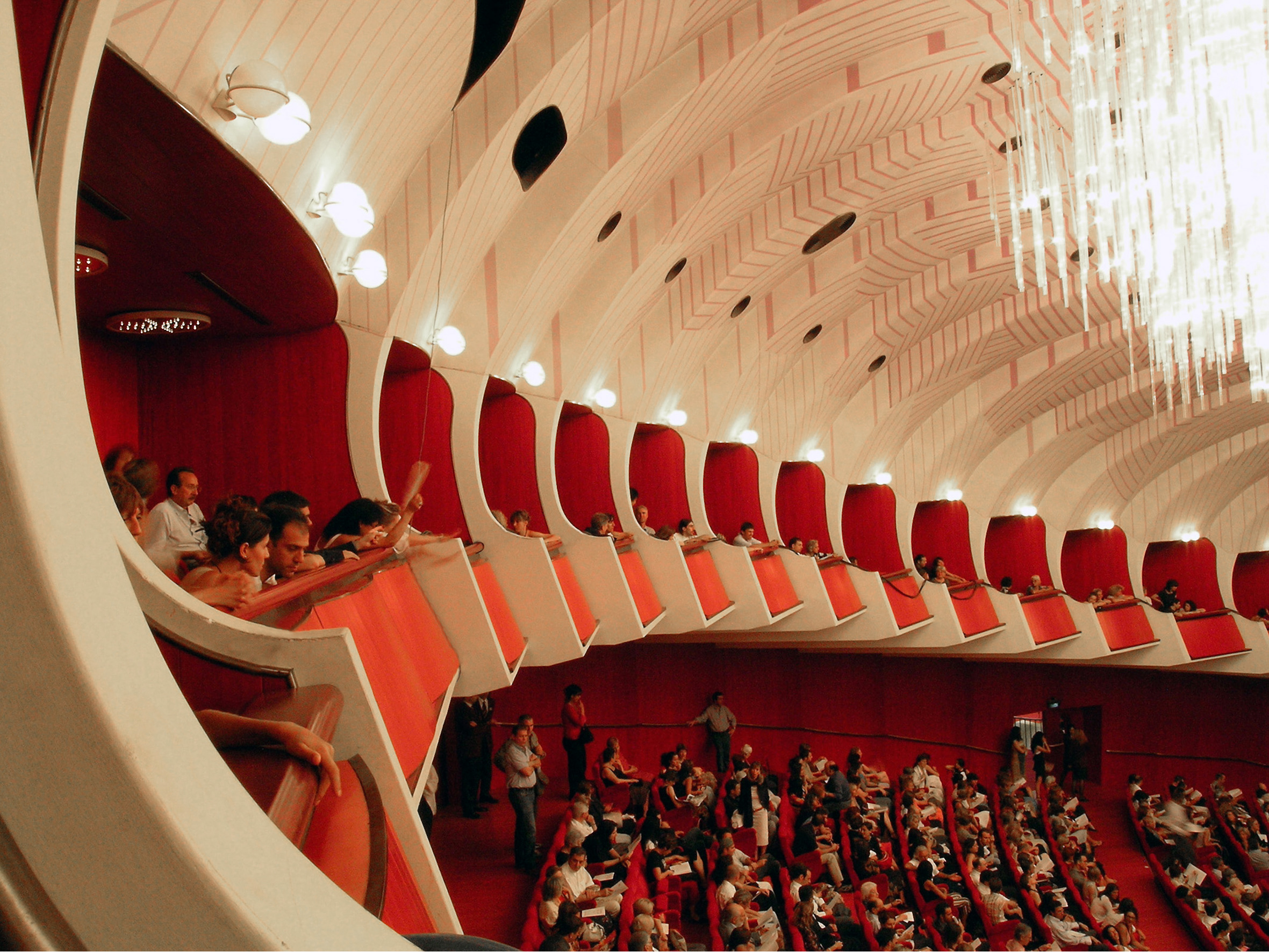 Along the circumference of the auditorium there is a tier of 31 descending boxes. The largest, with a capacity of 18 chairs, is in the middle, situated at the highest point. The side boxes have room for 6 or 4 chairs, for a total of 194 seats.
Along the circumference of the auditorium there is a tier of 31 descending boxes. The largest, with a capacity of 18 chairs, is in the middle, situated at the highest point. The side boxes have room for 6 or 4 chairs, for a total of 194 seats.
The entrance to the boxes is mediated by the presence of a back area furnished with a mirror and coat rack. The descending line of boxes towards the stage allows complete visibility, facilitated by the slight displacement of the parapets, which turn progressively more towards the stage.Air space
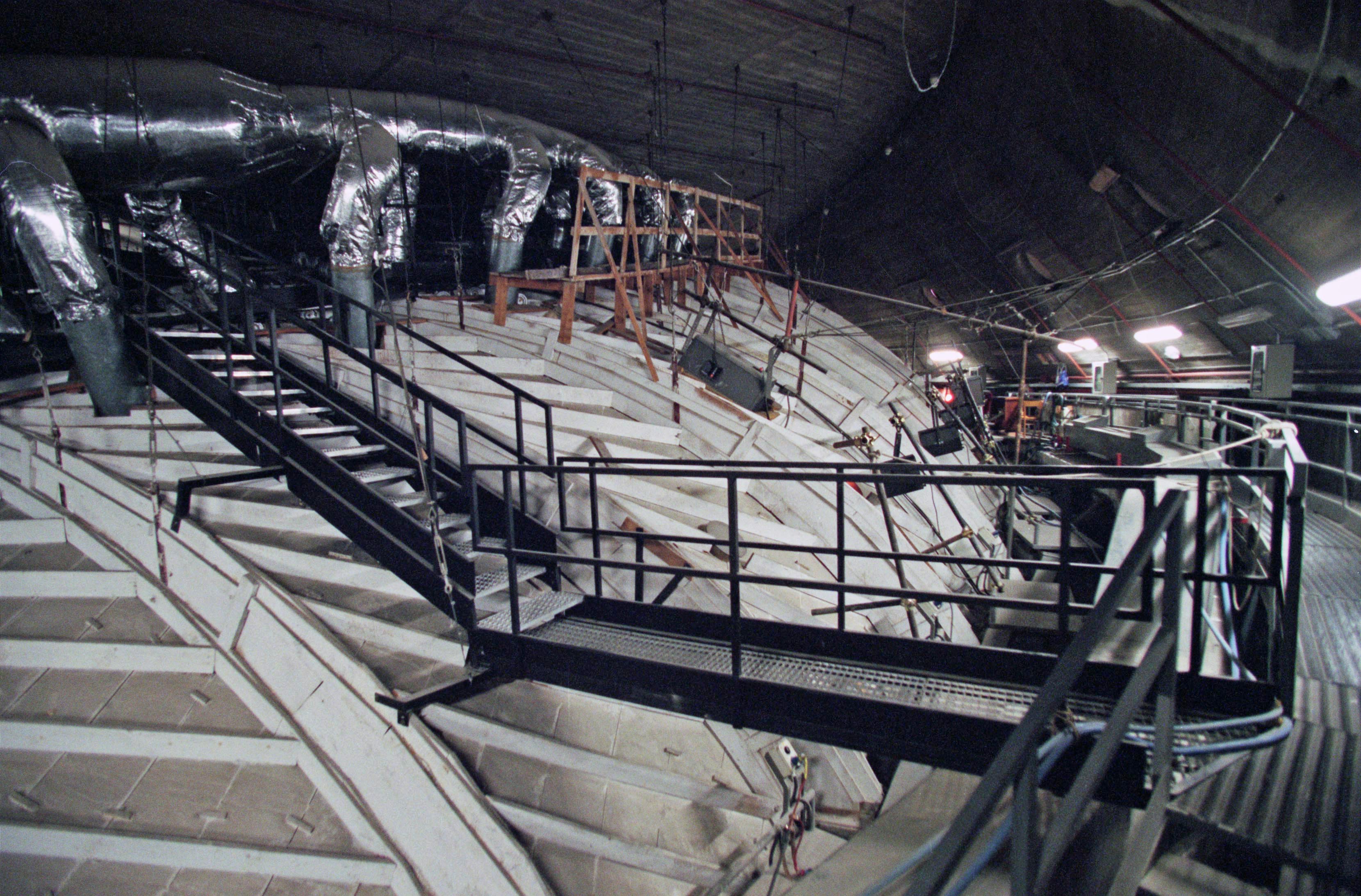 Between the ceiling of the auditorium and the concrete roof is an air space: a surreal ambient composed of cables and metallic cat walks. An entangled net of steel suspensions holds up the wooden dome and an amazing intersecting of cat walks reaches every corner of the airspace, making it possible to carry out any necessary maintenance work to the electrical, air and fire protection systems, avoiding direct contact with the delicate structure underneath.
Between the ceiling of the auditorium and the concrete roof is an air space: a surreal ambient composed of cables and metallic cat walks. An entangled net of steel suspensions holds up the wooden dome and an amazing intersecting of cat walks reaches every corner of the airspace, making it possible to carry out any necessary maintenance work to the electrical, air and fire protection systems, avoiding direct contact with the delicate structure underneath.
From certain openings in the dome pass beams of light from large spotlights, called “occhi di bue”, from which strong cones of light are emitted which, crossing the length of the auditorium, hit specific points of the stage to throw objects or characters into relief.Lighting control booth
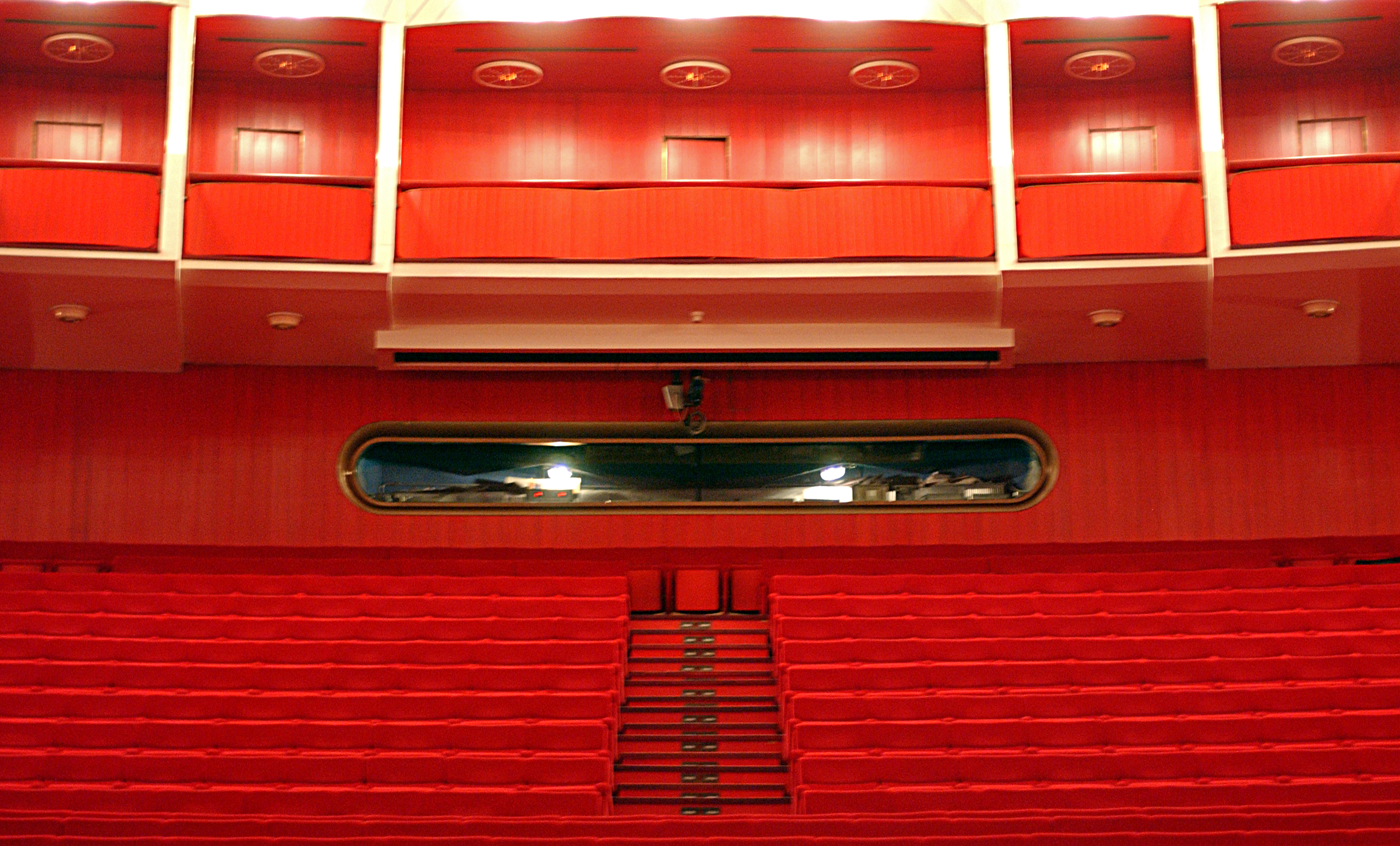 The oblong window of the lighting control booth is placed in the area under the central box. From here, using a computerised system, the lighting circuits of the stage are regulated.
The oblong window of the lighting control booth is placed in the area under the central box. From here, using a computerised system, the lighting circuits of the stage are regulated.
The booth is equipped with a mixer for special effects and two light mixers of 512 channels.
During performances, the lighting technician is in contact via audio with a musical collaborator who is backstage: in fact, even if the lighting effects are memorised during special rehearsals, the succession of lighting changes cannot be completely automated because musical tempos can change from performance to performance.Orchestra pit
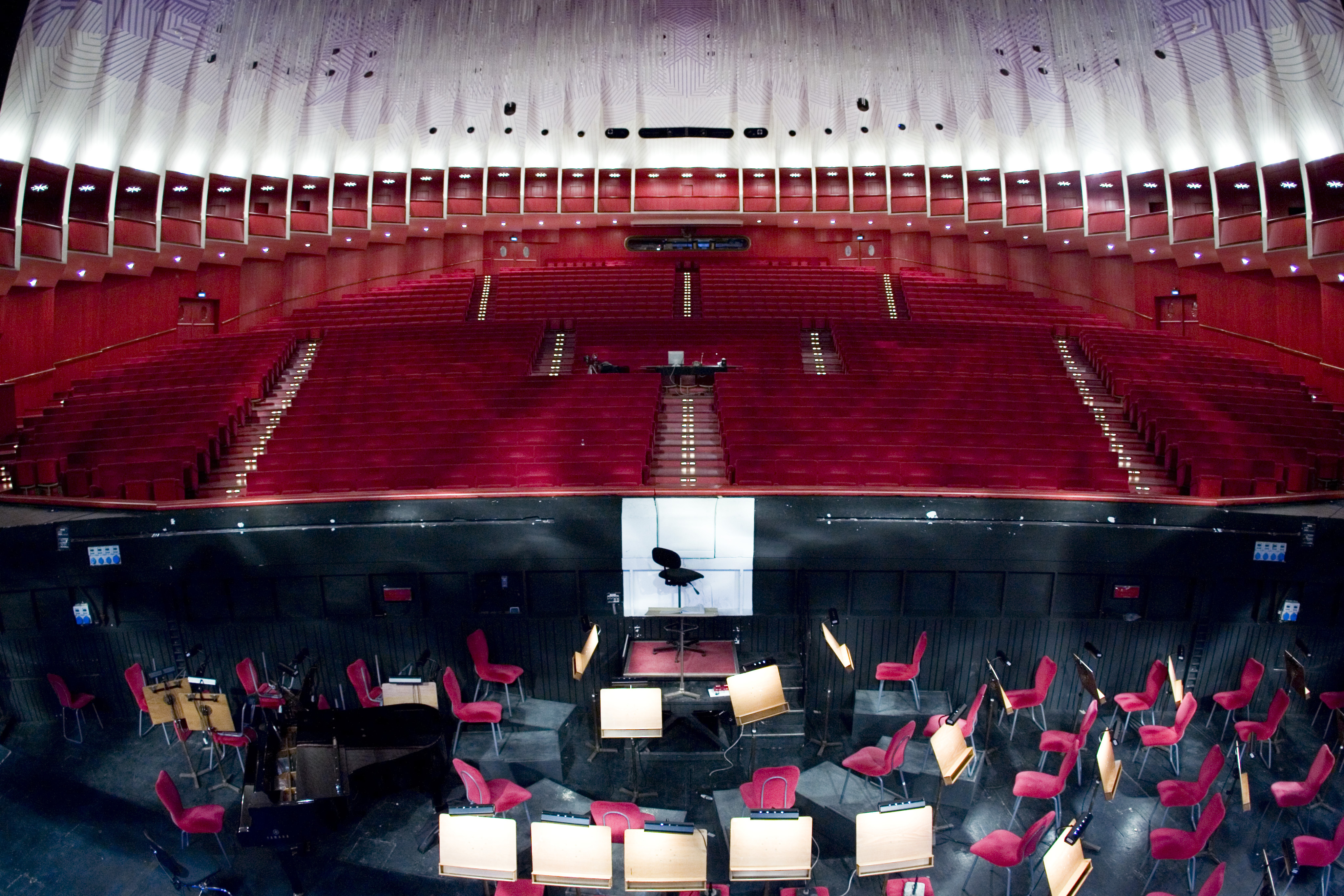 The orchestra pit is the space reserved for the orchestra and the conductor, and is composed of a section which is stationary – situated at a depth of 3 metres – and of a mobile floor which can be regulated to different heights, depending on the requirements of the stage. For concert performances the floor of the orchestra pit is raised to stage level.
The orchestra pit is the space reserved for the orchestra and the conductor, and is composed of a section which is stationary – situated at a depth of 3 metres – and of a mobile floor which can be regulated to different heights, depending on the requirements of the stage. For concert performances the floor of the orchestra pit is raised to stage level.Proscenium and curtains
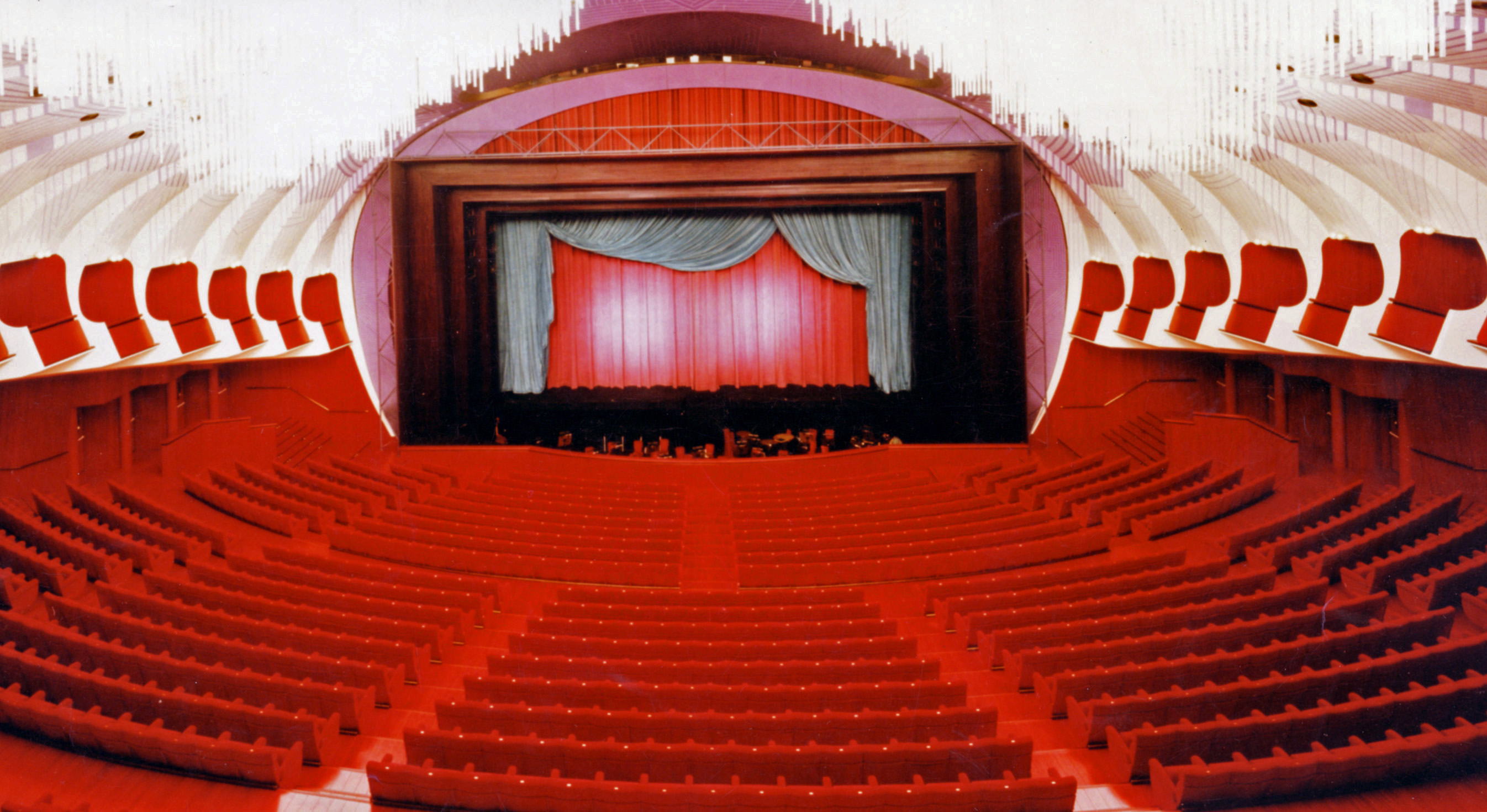 The proscenium, also involved in the acoustical restoration of 1996, forms the structure that connects the auditorium to the stage. It is a square constituted by mobile elements that make it possible to frame the stage in different ways. The present proscenium, superimposed on Mollino’s original structure, is made up of two lateral mobile towers and the architrave above (arlecchino). There are three types of curtains: the Grand Curtain (red, opening horizontally), the Imperial or tableau curtain (green, opening towards the upper corners) and the safety curtain (white).
The proscenium, also involved in the acoustical restoration of 1996, forms the structure that connects the auditorium to the stage. It is a square constituted by mobile elements that make it possible to frame the stage in different ways. The present proscenium, superimposed on Mollino’s original structure, is made up of two lateral mobile towers and the architrave above (arlecchino). There are three types of curtains: the Grand Curtain (red, opening horizontally), the Imperial or tableau curtain (green, opening towards the upper corners) and the safety curtain (white). - Stage
-
One of the largest in Europe, the stage of the Teatro Regio di Torino is a complex structure built on the Latin cross plan. Dominated by the imposing fly tower, it is made up of the main stage, with its six lifts, two side scene docks and the area behind.
The central stage and lifts
 The central or "action" stage is the only part of the stage that is visible to the audience. It has both fixed and mobile parts, capable of recreating the most varied types of staging. There is no doubt that it represents the true heart of the theatre, at least for the audiences, who see dramas, passions and comedies consumed there. The command post, however, is located far from the eyes of onlookers: on the second bridge of the fly tower, at a height of 7 metres!
The central or "action" stage is the only part of the stage that is visible to the audience. It has both fixed and mobile parts, capable of recreating the most varied types of staging. There is no doubt that it represents the true heart of the theatre, at least for the audiences, who see dramas, passions and comedies consumed there. The command post, however, is located far from the eyes of onlookers: on the second bridge of the fly tower, at a height of 7 metres!Fly tower
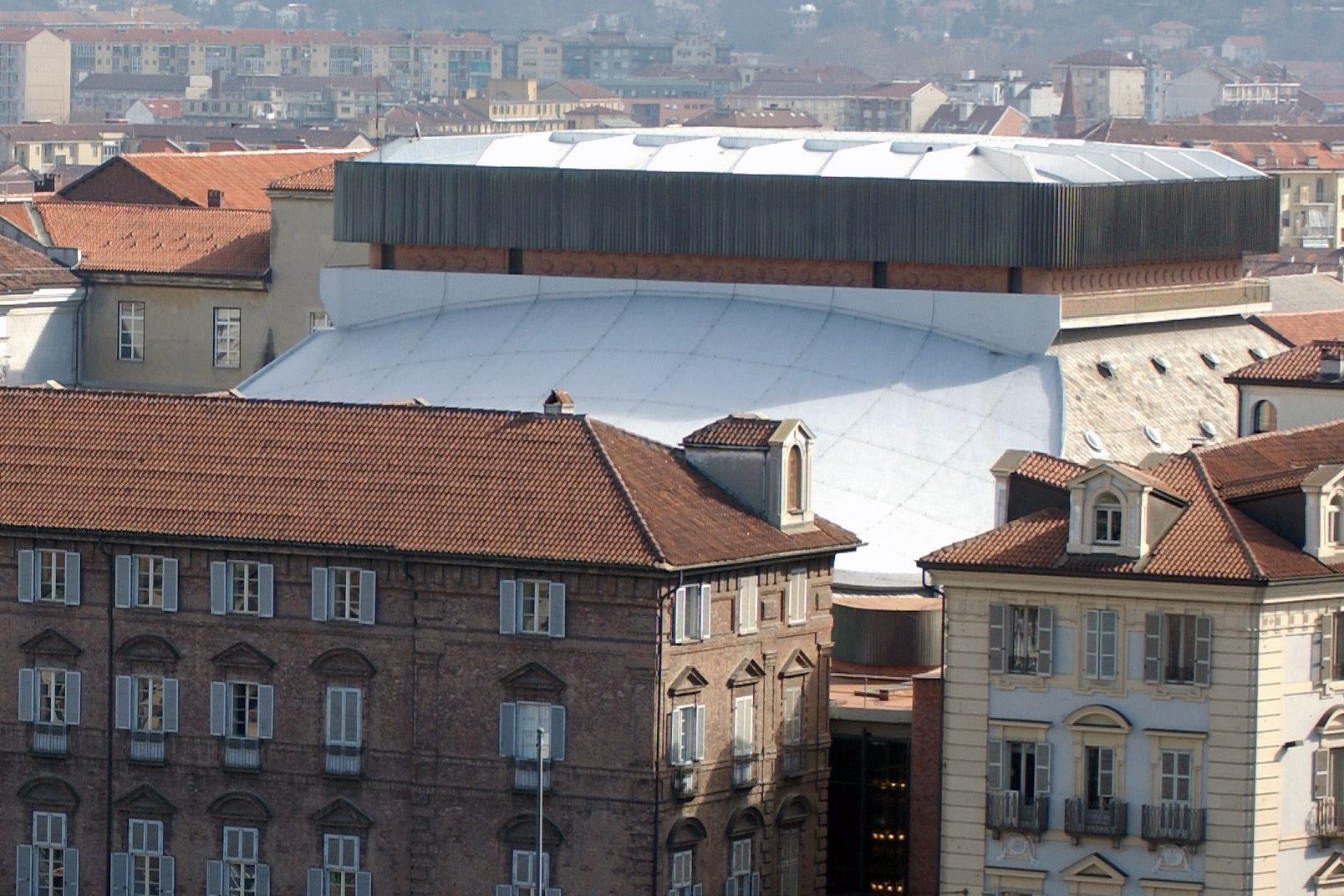 The fly tower dominates the central stage from its 32 metres of height. With its remarkable containment and load capacity, it can hold numerous pieces of machinery and backdrops, as well as wings and lights, which, thanks to the many fly bars, can be raised and hidden from the audience’s view.
The fly tower dominates the central stage from its 32 metres of height. With its remarkable containment and load capacity, it can hold numerous pieces of machinery and backdrops, as well as wings and lights, which, thanks to the many fly bars, can be raised and hidden from the audience’s view.Side stages
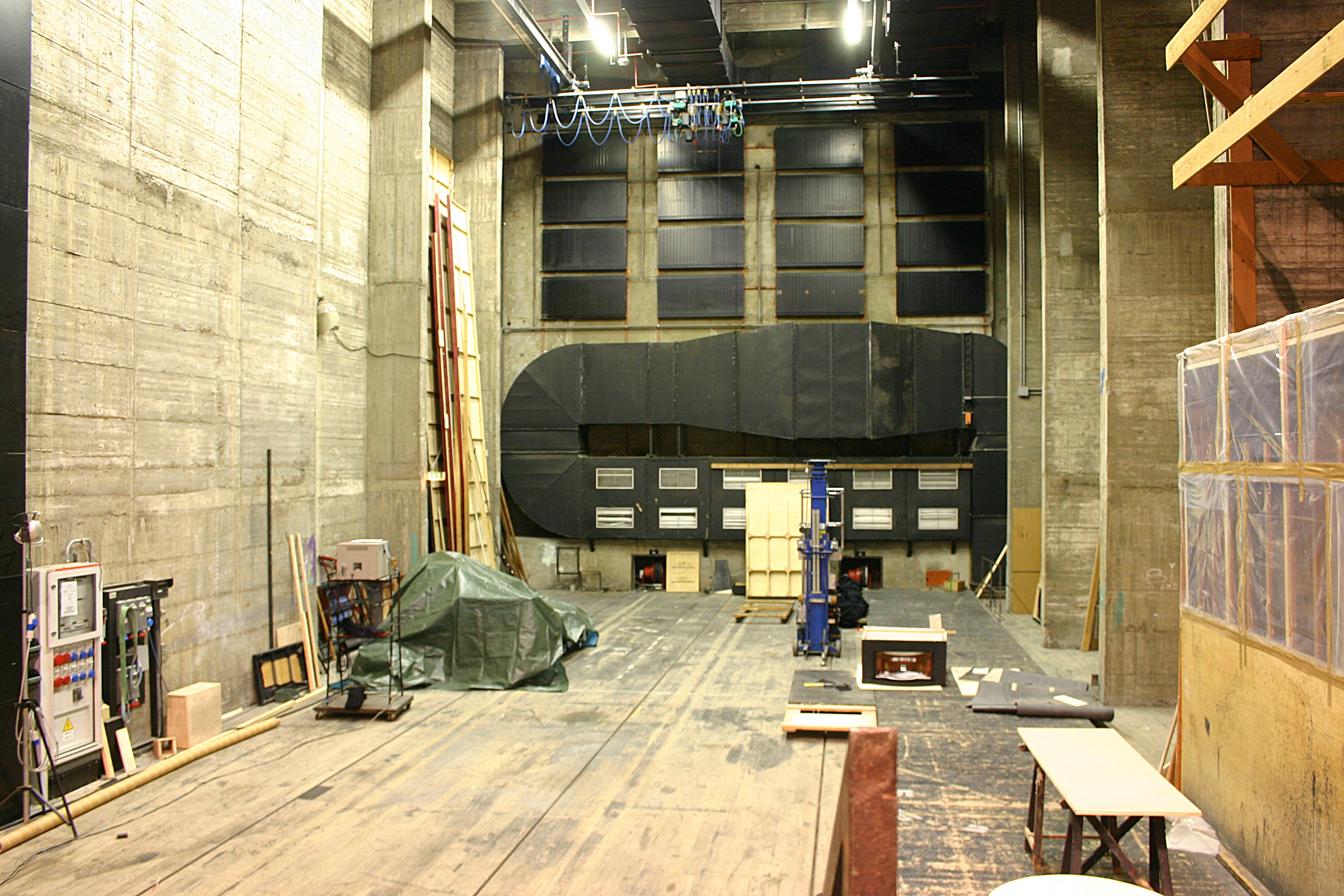 The side stages are two areas positioned symmetrically to the right and left of the central stage where sets and props are kept, allowing precious time to be saved during scene changes. They are equipped with modular slip stages that are utilised during every scene change: an operation that must be fast, organised and totally silent. Singers, stagehands, prop men and wardrobe staff run back and forth frantically in the semi-darkness. Overseeing everything, the watchful eye and able direction of the stage manager.
The side stages are two areas positioned symmetrically to the right and left of the central stage where sets and props are kept, allowing precious time to be saved during scene changes. They are equipped with modular slip stages that are utilised during every scene change: an operation that must be fast, organised and totally silent. Singers, stagehands, prop men and wardrobe staff run back and forth frantically in the semi-darkness. Overseeing everything, the watchful eye and able direction of the stage manager.Rear slip stage and set lift
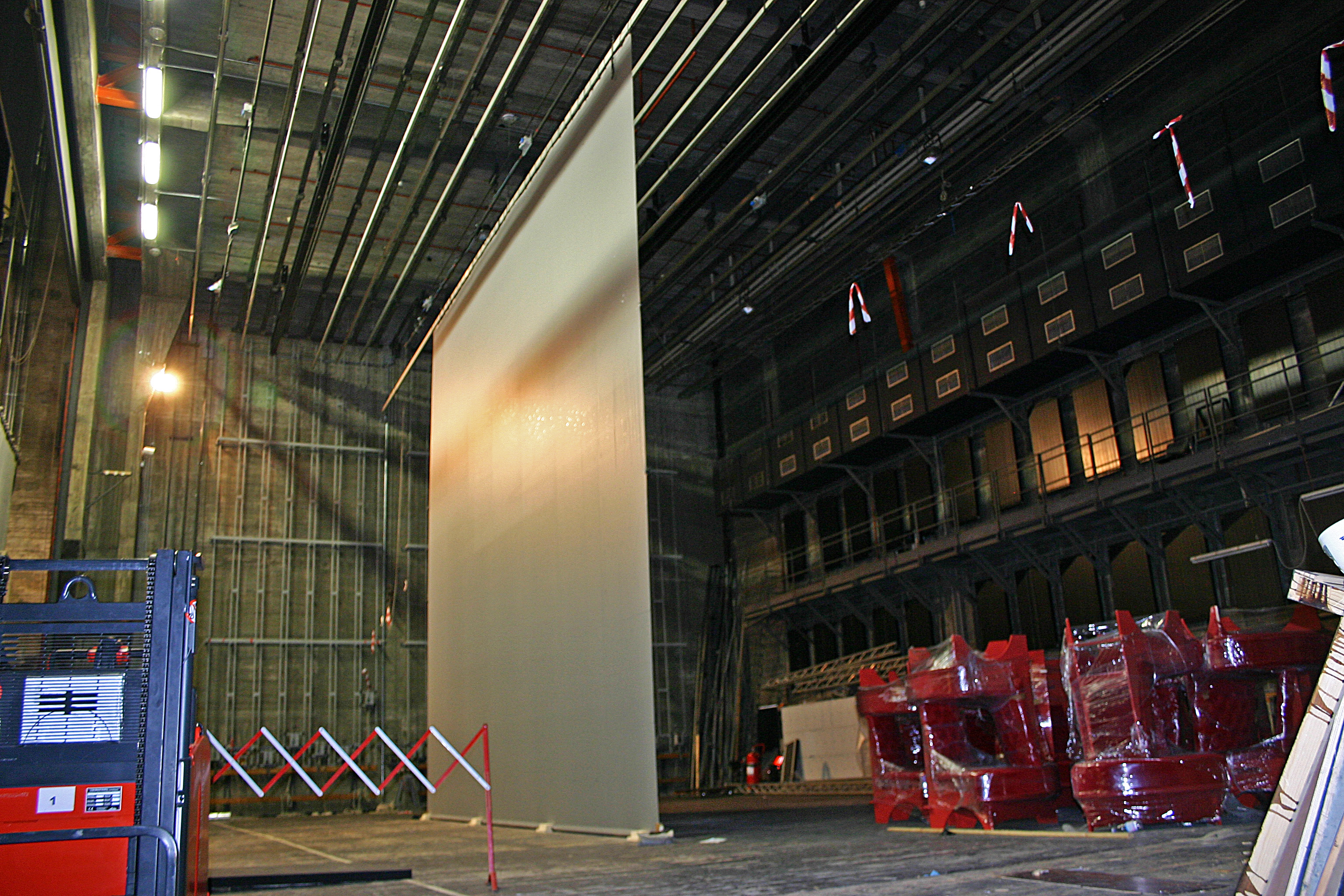 The back slip stage is a sort of platform of large dimensions which permits rapid scene changes. To its left, instead, we find the set lift: a real elevator for sets. Thanks to these two enormous machines and other stage machinery, it is possible to build the most complex sets and realise the most daring scene changes.
The back slip stage is a sort of platform of large dimensions which permits rapid scene changes. To its left, instead, we find the set lift: a real elevator for sets. Thanks to these two enormous machines and other stage machinery, it is possible to build the most complex sets and realise the most daring scene changes.
Next to the set lift is the store-room for tools and implements used by the stage technicians. Between the main stage and the back slip stage, there is another safety curtain, which isolates acoustically the two zones, allowing at the same time a rehearsal on the slip stage and staging work on the main stage (or vice versa).Sound laboratory
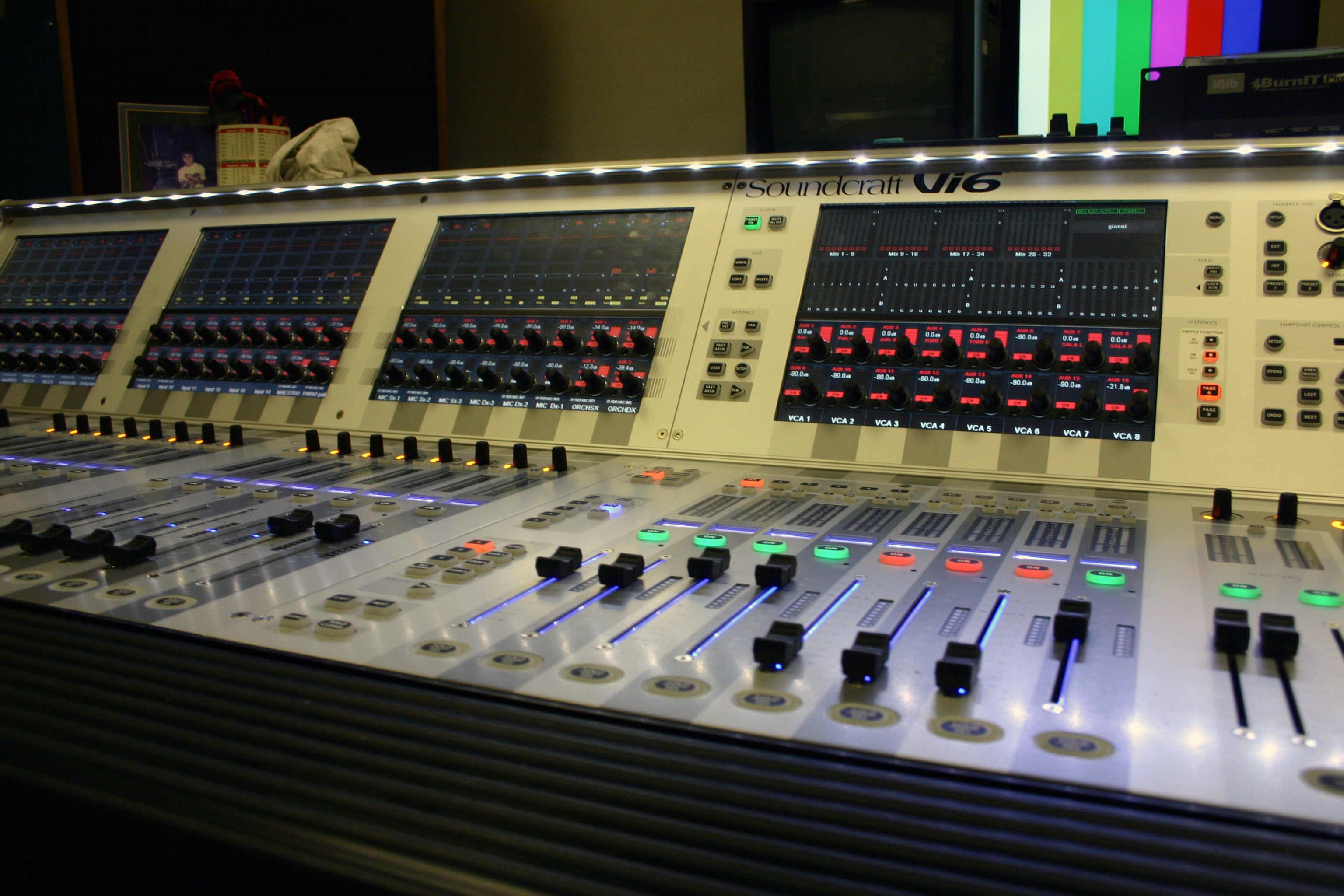 The sound laboratory is the technological heart that makes it possible to broadcast the audio of a performance in progress to the technical areas and foyer (for the benefit of late-comers). On particular occasions, specific audio effects are realised here.
The sound laboratory is the technological heart that makes it possible to broadcast the audio of a performance in progress to the technical areas and foyer (for the benefit of late-comers). On particular occasions, specific audio effects are realised here.
Inside this room – situated on the right side of the stage and elevated 3.5 metres from the floor – we find an excellent sound system made up of various professional mixers, different types of recorders, as well as computerised systems for audio/video elaboration and digital equalisation. In addition, there are three service communication systems: wired system, via radio e via two-way radios, allowing the technicians to communicate with each other from different locations.
In addition, the sound laboratory is responsible for the closed circuit television system with fixed cameras (one in the auditorium to film the stage and another in the orchestra pit to film the conductor) that transmits the images also to the foyer. - Rehearsal halls and service areas
-
On the subterranean floors of the Theatre there are rooms of dimensions that are unthinkable for anyone who has never seen them. They are used as rehearsal halls, and include the dance studio, the directing studio and the twenty practice rooms; there are also storerooms and workshops (for costumes, make up and wigs). Obviously, there are also dressing rooms, located under the artists’ entrance, and technological services such as the heating plant, the ventilation plant and the fire protection water tank, etc.
Chorus and orchestra rehearsal halls
 The chorus rehearsal hall and orchestra rehearsal hall are two identical rooms, situated, since 1992, behind the fly tower, where the sets workshop was once located. Sound-proofed and positioned on an inclined plane, they were originally on the subterranean floors, under the auditorium. Instead, the 20 practice rooms, small sound-proofed rooms with pianos, are underground, at about 7 metres in depth.
The chorus rehearsal hall and orchestra rehearsal hall are two identical rooms, situated, since 1992, behind the fly tower, where the sets workshop was once located. Sound-proofed and positioned on an inclined plane, they were originally on the subterranean floors, under the auditorium. Instead, the 20 practice rooms, small sound-proofed rooms with pianos, are underground, at about 7 metres in depth.Directing studio
 The directing studio is where staging rehearsals are held when the stage is unavailable. It is on the third floor underground (at a depth of -9,80 m) and extends over an area of 240 sq m. The studio is equipped with 16 mobile platforms which can be adjusted to different heights (maximum height 2 metres) to simulate the different levels of the stage lifts.
The directing studio is where staging rehearsals are held when the stage is unavailable. It is on the third floor underground (at a depth of -9,80 m) and extends over an area of 240 sq m. The studio is equipped with 16 mobile platforms which can be adjusted to different heights (maximum height 2 metres) to simulate the different levels of the stage lifts.Dance studio
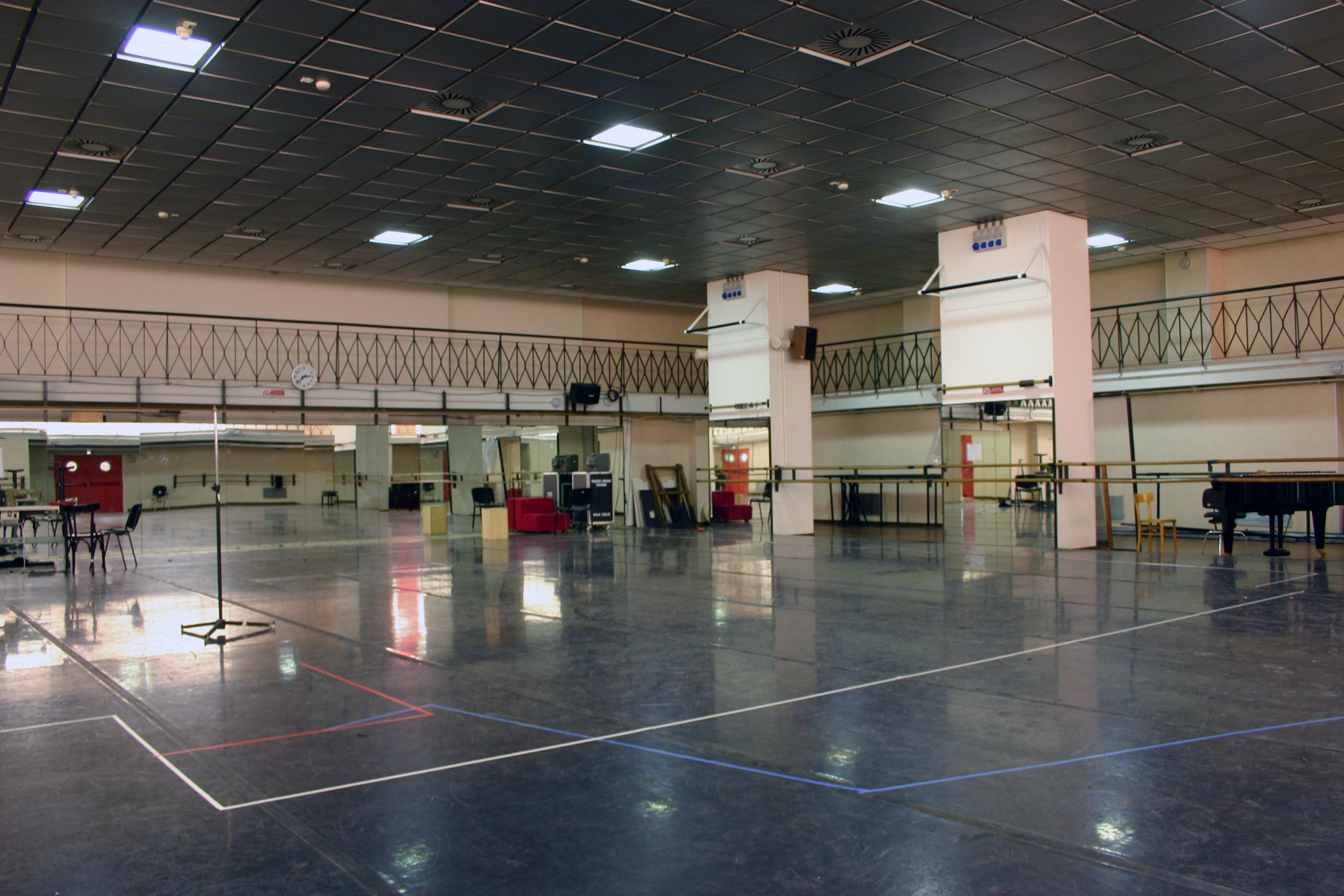 The dance studio, located in the basement, makes use of an area of 180 sq m ( 15 x 12 metres) and its walls are completely covered with mirrors. The floor is covered with a dance carpet in PVC. It is equipped with a pianoforte, a stereo system and a video recorder.
The dance studio, located in the basement, makes use of an area of 180 sq m ( 15 x 12 metres) and its walls are completely covered with mirrors. The floor is covered with a dance carpet in PVC. It is equipped with a pianoforte, a stereo system and a video recorder.Dressing rooms
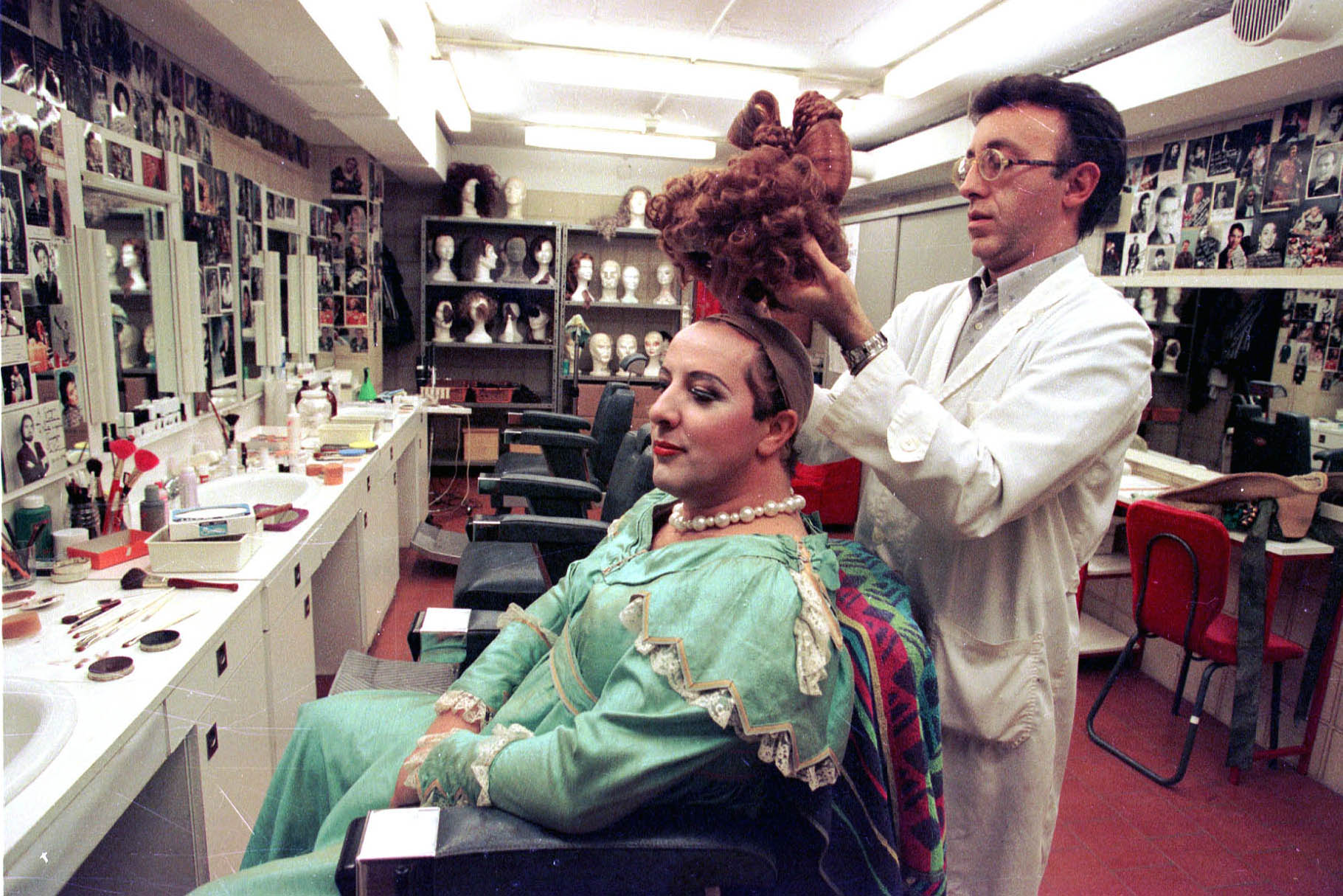 These are 22 rooms where the artistis get ready, located in an area under the stage. Nearby is the orchestra room, where orchestra members prepare before going into the pit, and obviously, the make-up room. Besides the twenty-two dressing rooms situated under the stage, there is one on stage dressing room near the central stage.
These are 22 rooms where the artistis get ready, located in an area under the stage. Nearby is the orchestra room, where orchestra members prepare before going into the pit, and obviously, the make-up room. Besides the twenty-two dressing rooms situated under the stage, there is one on stage dressing room near the central stage.Costume workshop
 The costume workshop, located on the second subterranean floor, is where stage costumes are prepared according to the needs of the artists appearing at the Regio. Contributing to the creation of the characters are also the make up room, the shoe workshop and the wig workshop. The work of the workshop staff is not limited to the work of preparation: their presence is also essential during performances to dress the artists, realise quick changes and for any emergencies.
The costume workshop, located on the second subterranean floor, is where stage costumes are prepared according to the needs of the artists appearing at the Regio. Contributing to the creation of the characters are also the make up room, the shoe workshop and the wig workshop. The work of the workshop staff is not limited to the work of preparation: their presence is also essential during performances to dress the artists, realise quick changes and for any emergencies.Sets workshop
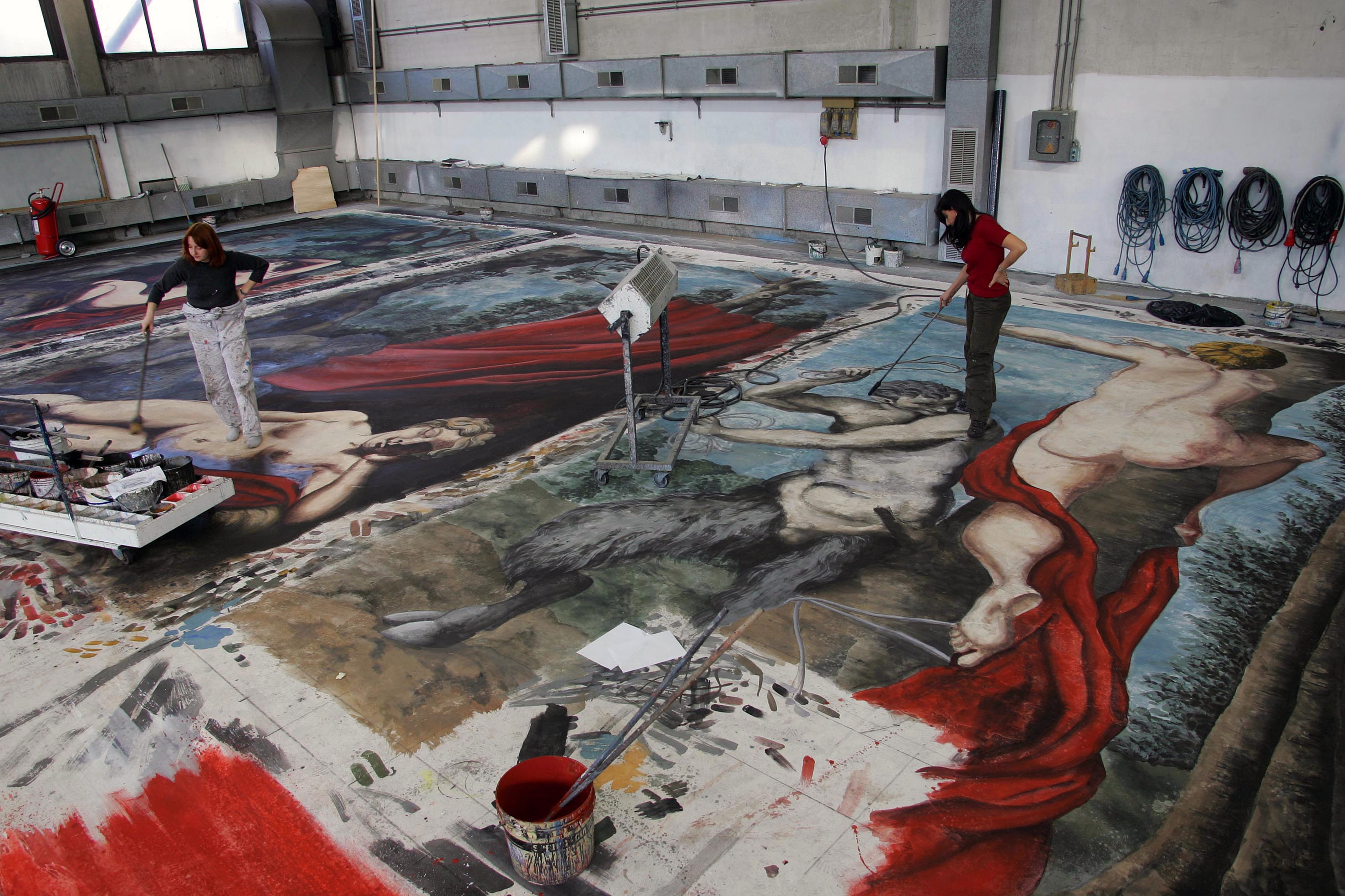 The construction of the sets for new stagings of Teatro Regio are carried out in the sets workshop, until 1984 located inside the Theatre, and since then transferred to Strada Settimo. The present location has permitted a considerable increase in the space destined for the construction and storing of sets produced by the Regio.
The construction of the sets for new stagings of Teatro Regio are carried out in the sets workshop, until 1984 located inside the Theatre, and since then transferred to Strada Settimo. The present location has permitted a considerable increase in the space destined for the construction and storing of sets produced by the Regio.Technological services
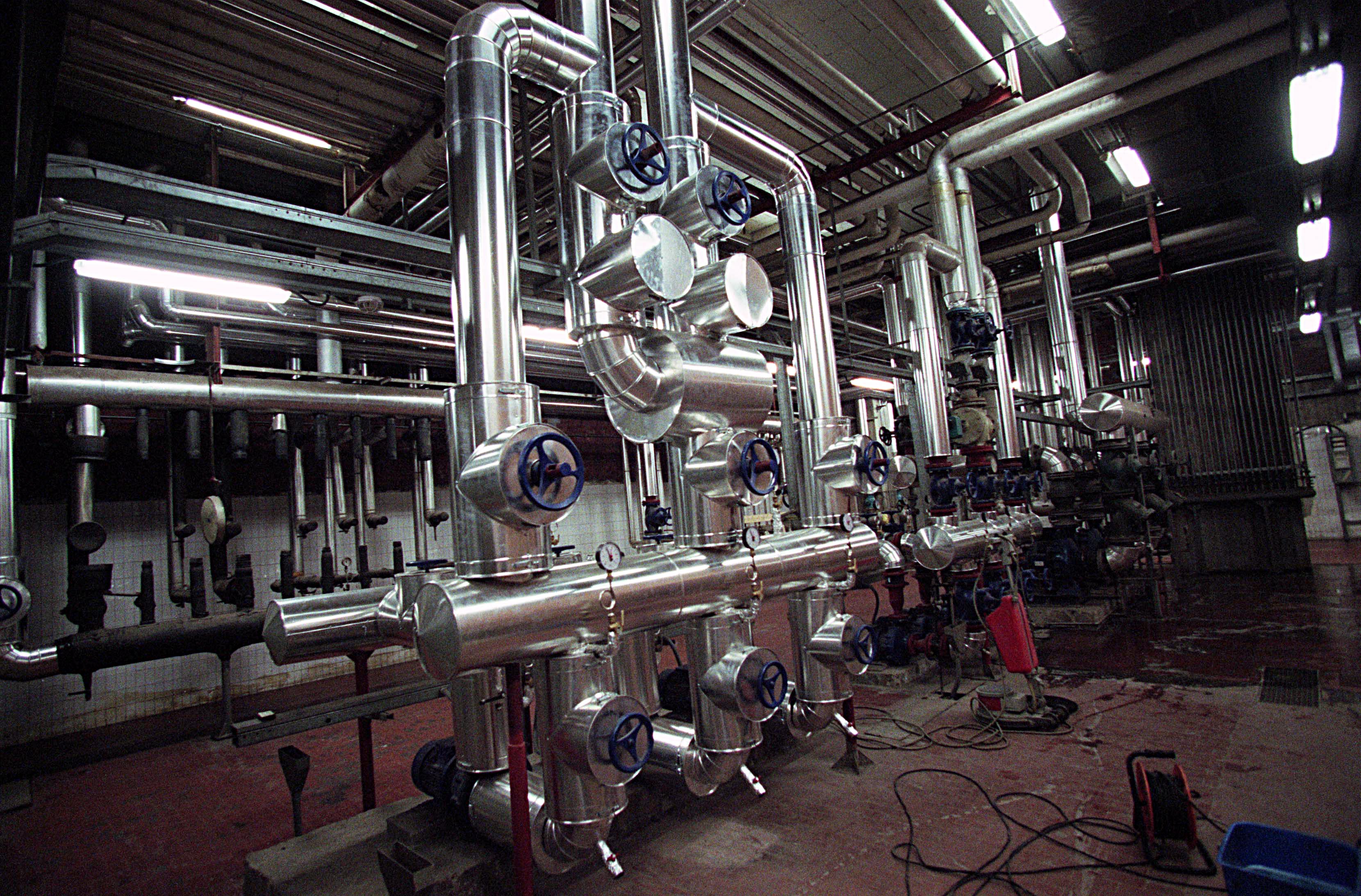 The numerous technological services of the Theatre – situated at more than 12 metres below ground – comprise the heating and air conditioning systems, the data centre, the lift area and the emergency services.
The numerous technological services of the Theatre – situated at more than 12 metres below ground – comprise the heating and air conditioning systems, the data centre, the lift area and the emergency services.
